National News
-
Ayodhya verdict announced by the Supreme Court
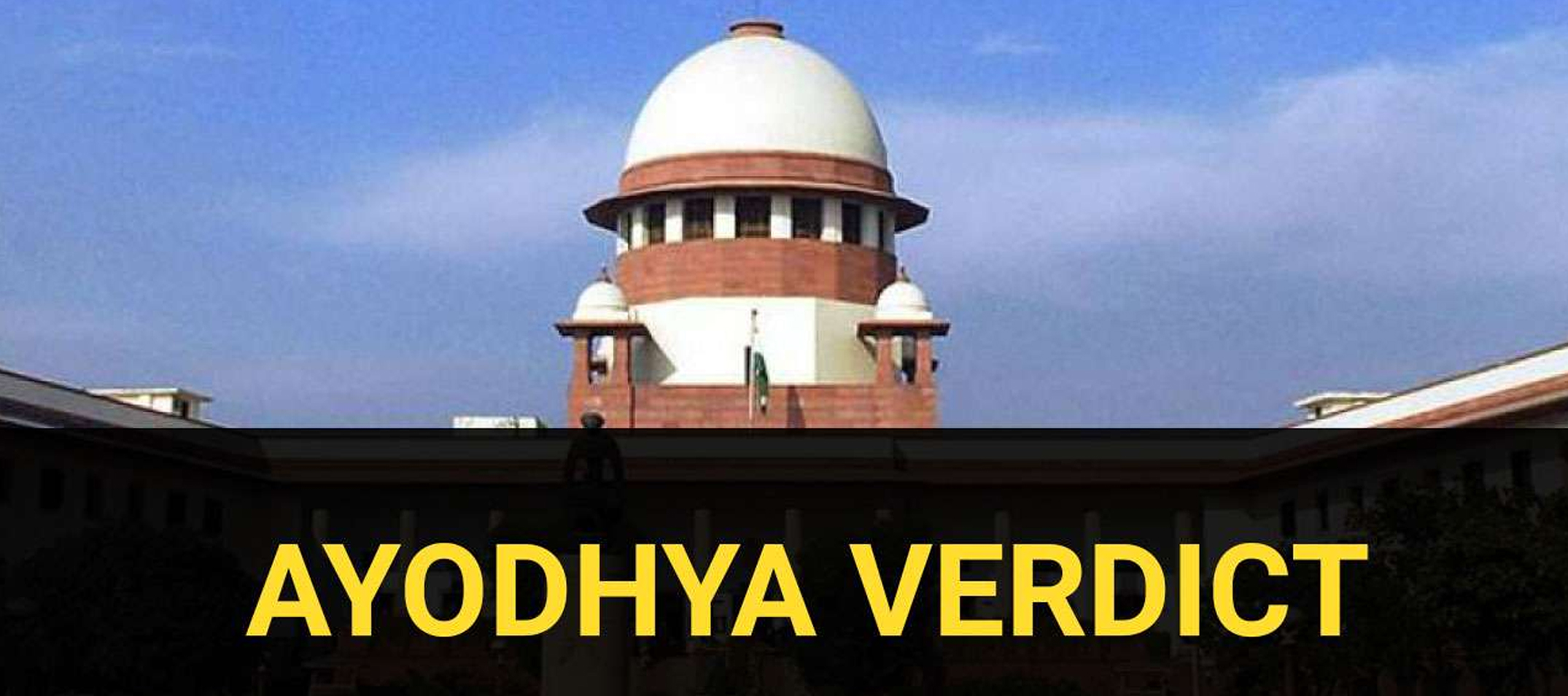
The Supreme Court on November 9, 2019 pronounced its judgement on Ayodhya Ram Janma Bhoomi-Babri Masjid land dispute case. It cleared the way for the construction of Ram Temple in the disputed 5-acre land. The verdict was pronounced by a 5 judge bench headed by the Chief Justice of India Ranjan Gogoi. The bench also comprised of justices Ashok Bhushan, S A Bobde, D Y Chandrachud and S Abdul Nazeer. In a verdict 5-0, all the justices stood unanimous.
The court upheld the claim that the disputed Ram Janmbhoomi-Babri Masjid site is the birthplace of Ram. In 2010, the Allahabad High Court pronounced a judgement that divided the disputed land among three litigants namely Nirmohi Akhara, Sunni Waqf Board and Ram Lalla.
-
PM Modi, Imran inaugurate Kartarpur corridor at respective ends
Prime Minister Narendra Modi inaugurated the Kartarpur corridor, flagging off the first batch of over 500 Indian pilgrims. The first batch of pilgrims was led by Akal Takhat Jathedar Giani Harpreet Singh to Gurdwara Darbar Sahib through the corridor, which was thrown open days ahead of the 550th birth anniversary of Guru Nanak Dev on November 12. The prime minister inaugurated the passenger terminal building of the corridor on the Indian side, also known as the Integrated Check Post, where pilgrims will get clearance to travel through the newly-built 4.5 km-long corridor.
-
Robotic surgery facility inaugurated at Centre-run Safdarjung Hospital
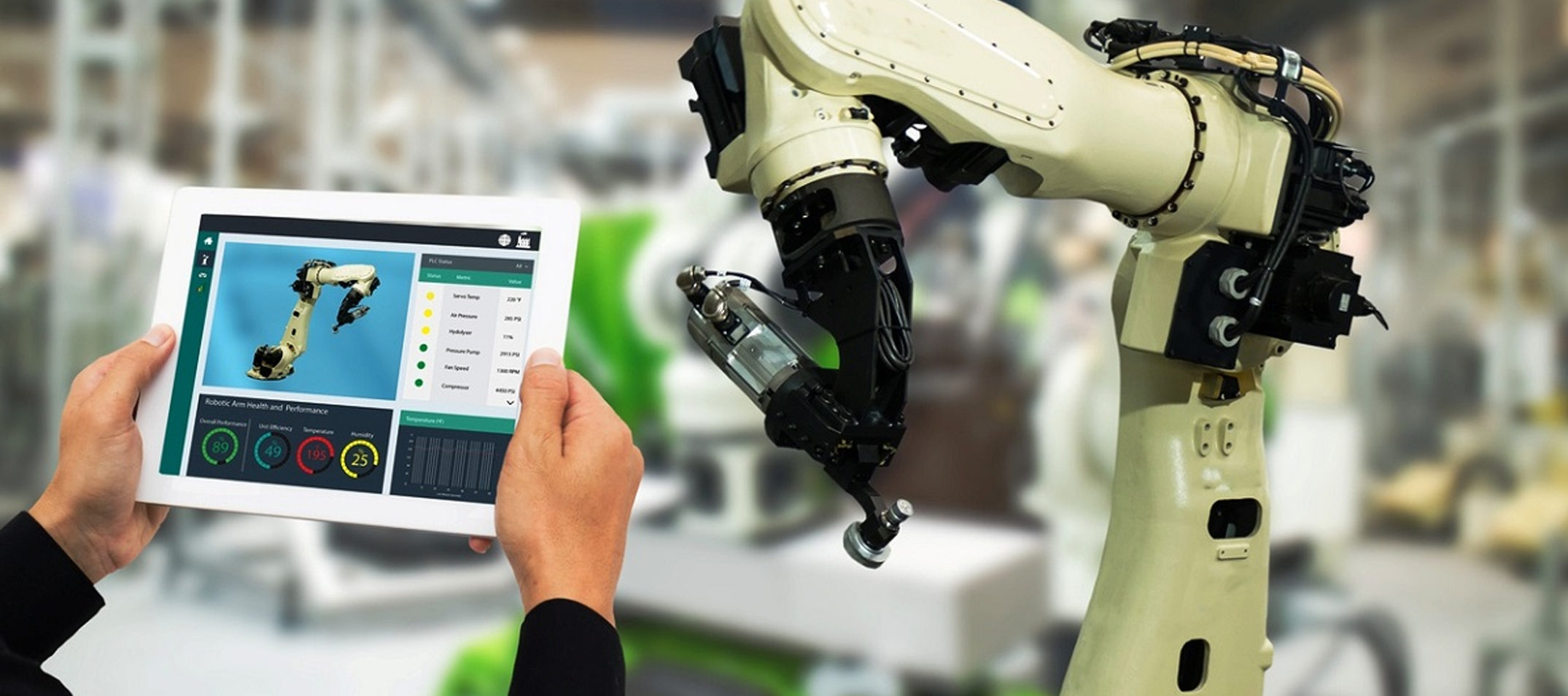
A robotic surgery facility was opened for public at the Centre-run Safdarjung Hospital in Delhi. Safdarjung Hospital is the first central government-run healthcare institution to have this latest facility. Robotic surgery has the advantage of providing minimally invasive surgery, reducing significantly morbidity and mortality of critically ill, cancer and kidney failure patients. The operating time also decreases resulting in improvement in turnover of patients and decrease in waiting list of patients for surgery significantly, it said.
-
12-day Odd-Even Scheme in Delhi comes into effect on 3 November 2019
The Odd-Even car rationing scheme to curb air pollution in the National Capital came into effect from 3 November 2019. It will continue till the 15th of this month. The scheme will be in effect from 8 AM to 8 PM on all days except Sundays. The scheme restrictions will not apply on two-wheelers, women drivers and vehicles being used for medical emergencies and ferrying school children. Delhi government has deployed over 2,000 additional buses to cater to public transport demand during the period. Delhi Metro will also run 61 additional trips during the 12-day scheme.
Violations of the rules will invite a fine of 4,000 rupees.
-
ISRO’s NavIC Set to be Commercialized by Antrix
The ISRO and its older commercial arm Antrix Corporation Ltd. are poised to commercialize India’s regional navigation satellite system, NavIC. Navigation in Indian Constellation (NAVIC) is the Indian system of eight satellites that is aimed at telling the business and individual users where they are, or how their products and services are moving.
The indigenous positioning or location-based service (LBS) works just like the established and popular U.S. Global Positioning System or GPS but within a 1,500-km radius over the sub-continent.
-
Govt releases new map of India showing UTs of Jammu and Kashmir, Ladakh
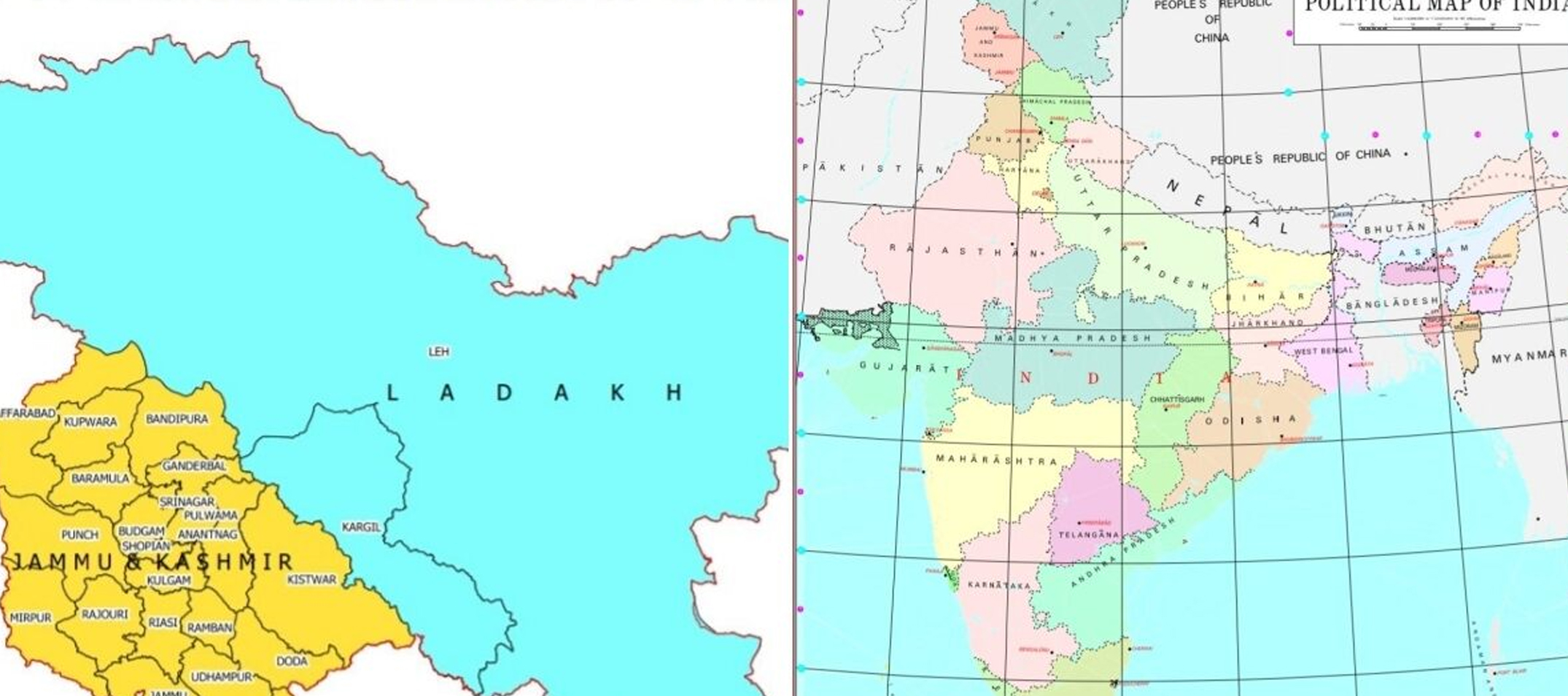
The government released the maps of newly created Union Territories (UTs) of Jammu and Kashmir, and Ladakh and the map of India depicting these UTs.
The Ministry of Home Affairs said the UT of Ladakh consists of two districts of Kargil and Leh while the rest of the erstwhile state of Jammu and Kashmir is in the UT of Jammu and Kashmir. In 1947, the erstwhile state of Jammu and Kashmir had the following 14 districts - Kathua, Jammu, Udhampur, Reasi, Anantnag, Baramulla, Poonch, Mirpur, Muzaffarabad, Leh and Ladakh, Gilgit, Gilgit Wazarat, Chilhas and Tribal Territory. By 2019, the government of erstwhile state of Jammu and Kashmir had reorganized the areas of these 14 districts into 28 districts.
The names of the new districts were - Kupwara, Bandipur, Ganderbal, Srinagar, Budgam, Pulwama, Shupian, Kulgam, Rajouri, Ramban, Doda, Kishtivar, Samba and Kargil.
Out of these, Kargil district was carved out from the area of Leh and Ladakh district.
The Leh district of the new UT of Ladakh has been defined in the Jammu and Kashmir Reorganization (Removal of Difficulties) Second Order, 2019, issued by the President of India, to include the areas of the districts of Gilgit, Gilgit Wazarat, Chilhas and Tribal Territory of 1947, in addition to the remaining areas of Leh and Ladakh districts of 1947, after carving out the Kargil District.
The maps prepared by Survey General of India depicting the new UTs of Jammu and Kashmir, and Ladakh, as created on October 31, 2019, along with the map of India, are released.
-
First ever movement of container cargo on Brahmaputra (National Waterway -2)
In line with Government’s focus on improving connectivity to the North Eastern Region (NER), a landmark container cargo consignment will sail on inland waterways from Haldia Dock Complex (HDC) to the Inland Waterways Authority of India (IWAI) terminal at Pandu in Guwahati on 4 November, 2019. The 12-15 days voyage will be an integrated IWT movement via National Waterway-1 (river Ganga), NW-97 (Sunderbans), Indo-Bangladesh Protocol (IBP) route and NW-2 (river Brahmaputra). This is the first ever containerized cargo movement on this Inland Water Transport (IWT) route. The 1425 km long movement is expected to establish the technical and commercial viability of IWT mode using these multiple waterways even as a series of pilot movements are planned on the stretch. The latest IWT movement is aimed at providing a fillip to North East Region’s industrial development by opening up an alternate route for transportation of raw material and finished goods.
-
Assam, French agency sign 50-mln euro forest restoration pact
Assam signed a pact worth 50-million euros with a French agency to help restore the state's forests and preserve its biodiversity. The partnership marks the launch of the second phase of the Assam Project for Forest and Biodiversity Conservation (APFBC). The agreement between the French Development Agency (AFD) and the Assam government will also strive to build capacities of the state's forest department, particularity its frontline staff. The APFBC aims to reforest an additional 12,000 hectares, scale up efforts in biodiversity conservation and skill the members of 135 more communities in different trades.
The second phase of financing will continue for five years with the aim of increasing the project's coverage area and corresponding impacts. The first phase of the project was implemented with support from AFD to reforest 21,000 hectares, build 33 flood refuge sites for wildlife, and trained over 6,000 members of the local communities in alternative livelihoods. The APFBC works closely with the women of local communities, empowering them through participatory planning and training them in new skills, the officials added.
-
Gujarat sets 30,000 MW renewable energy generation target by 2022
Gujarat government has set a target of 30,000 MW of renewable energy generation by 2022 from the current 9,670 MW. At present, the state has a total of 9,670 MW production of renewable energy which includes 6,880 MW wind energy and 2,654 MW solar energy. Gujarat has overtaken Maharashtra as its contribution in the country in industrial production increases 16.81 per cent compared to 14.21 percent of the latter.
-
DRDO’s Igniter Complex at HEMRL, Pune
Raksha Rajya Mantri Shripad Naik inaugurated the Defence Research and Development Organization (DRDO) Igniter Complex at High Energy Materials Research Laboratory (HEMRL) in Pune. Ignition is a crucial and highly critical phenomenon in the ignition chain of Rocket motor. HEMRL has developed various fuel /oxidizer based igniter compositions using organic binders. The laboratory has developed several ignition systems to ensure reliable initiation of rocket motors of various tactical as well as strategic missiles. Ignition system for Agni, Prithvi, Akash, Nag, Pinaka, Long Range Surface-to-Air Missile (LRSAM), etc. have been designed and developed in HEMRL. Technology for AKASH, Nag missiles and Pinaka Mk-I Rocket has been transferred to Ordnance Factory, Dehu Road, Pune and private industries.
-
Museum will be set up for Keeladi artifacts: Tamil Nadu minister
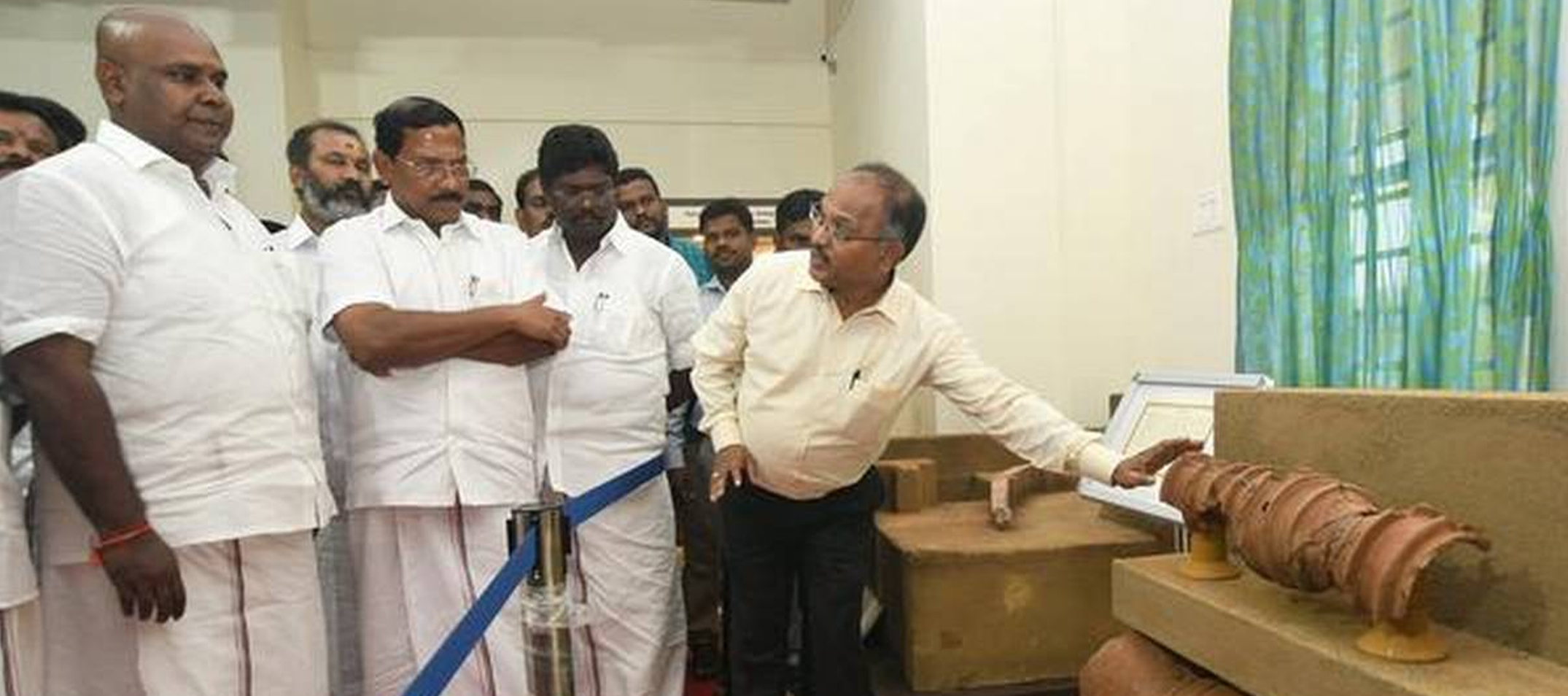
Tamil Nadu Minister for Culture and Archaeology K Pandiarajan has announced that a state of the art museum, exhibiting more than 600 artifacts unearthed at the historic Keeladi site in Sivaganga district, will soon come up. Excavations will be restarted in 15 sites including Keeladi, Kodumanal and Adichnallur from 15th January. Steps are being taken to bring 10,000 antique items and other artifacts, now in the ASI museum, to Tamil Nadu.
The Keezhadi excavation site, located in the border of Madurai and Sivaganga districts, has revealed a Sangam era settlement, dating back to the 6th century BCE.
The first three phases of excavation at Keeladi were conducted by the Archaeology Survey of India. The fourth and fifth phases were conducted by the archaeology department of Tamil Nadu.
-
NGT issues ultimatum to ban certain RO systems
The National Green Tribunal (NGT) has given an ultimatum to the Union Environment Ministry to issue notifications pertaining to prohibition on the use of RO (reverse osmosis) systems, which result in wastage of almost 80% water.
The NGT has passed an order this year (May 2019) to Environment Ministry to issue notifications pertaining to prohibition on the use of RO systems. NGT has noted that delay in compliance of order is causing harm to public health and environment in terms of an expert committee report to which the environment ministry is also a party.
-
In a first, Health ATM installed at Lucknow railway station
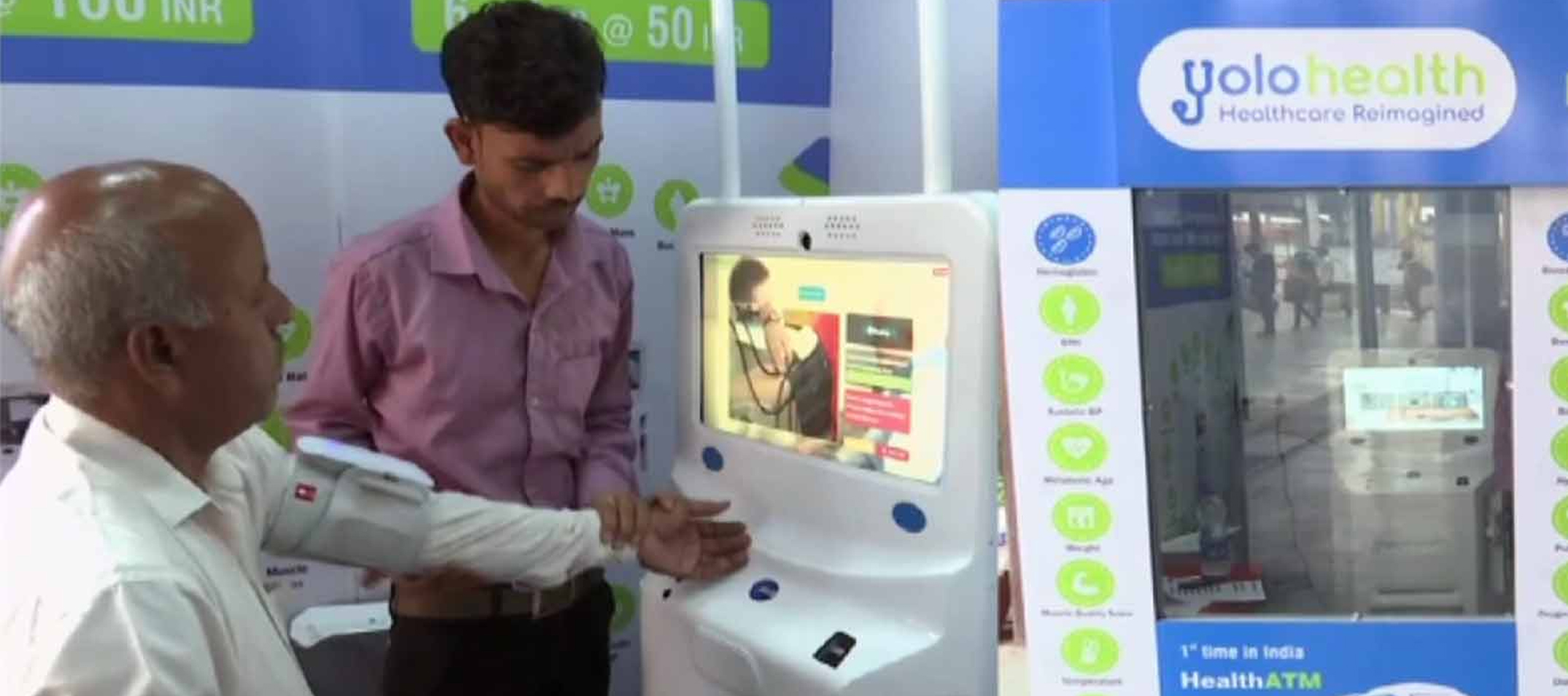
In a move to improve medical facilities for its passengers, the Indian Railways has installed two 'Health ATMs' at the Charbagh railway station in Lucknow, Uttar Pradesh. The walk-in kiosks are equipped with integrated medical devices for measuring basic vitals; conducting cardiology, neurology, pulmonary, gynecology testing; basic laboratory testing and emergency facilities, and provide as many as 16 check-ups at affordable rates.
The kiosks offer two types of check-ups, viz a 9-minute check-up that costs Rs. 100, and a 6-minute one that comes at Rs. 50.
The check-ups available at the facility include Body Mass Index (BMI), blood pressure test, body fat, hemoglobin, metabolic age, muscle mass, weight, height, temperature, basal metabolic rate, visceral fat, oxygen saturation, pulse rate, blood glucose, and bone mass.
-
Amarinder Singh launches first of its kind 'Punjab job helpline' for job seekers
Chief Minister Captain Amarinder Singh said that the state government has launched the first of its kind Punjab job helpline number for the job seekers. The first of its kind Punjab Job Helpline number is 76260-76260 for the job seekers.
-
Uttam rake: Indian Railways introduce first non-AC local train with CCTV cameras
Indian Railways’ Western Railway Zone has introduced state of the art ‘Uttam Rake’ for the local trains in Mumbai. The newly introduced rake has improved interiors and advanced features to make traveling in local a better experience for the Mumbaikars. The new rake was operated in its inaugural run as ladies special train from Churchgate – Virar, departing from Churchgate and arriving Virar on 5th November, 2019 Western Railways will run its normal services from 6th November, 2019 with 10 services a day. The Uttam rake is equipped with better seats, CCTV cameras, red emergency buttons, anti-dent partitions, modular luggage racks.
The rake will feature posters about Western Railway’s journey as an effective transport medium, various landmarks of Mumbai, inspirational quotes and posters of iconic women achievers to make the journey more enriching and delightful. Only two Uttam rakes have built at the Integral Coach Factory in Chennai, out of which the other has been given to South Central Railway.
-
FSSAI proposes ban on sale, ads of junk foods in school canteens, within 50 metres of campus
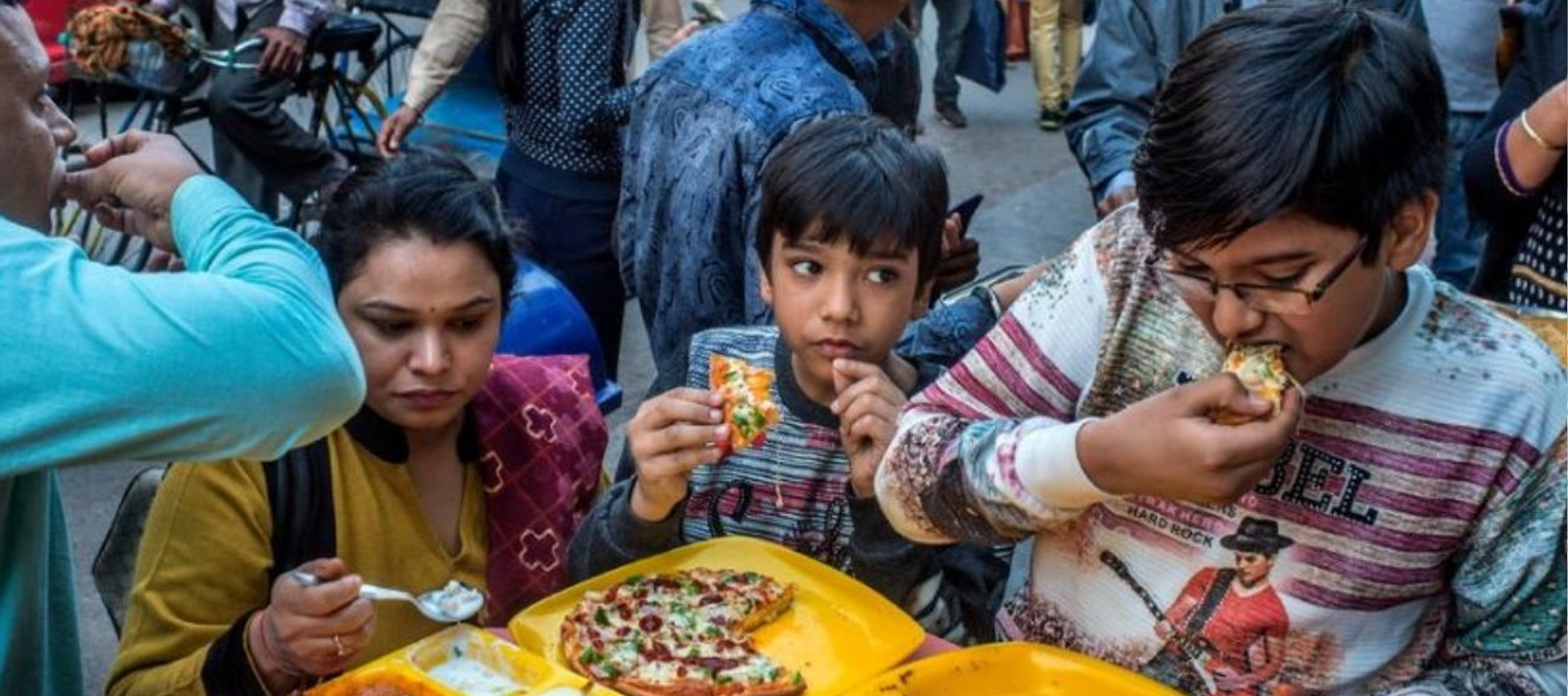
Food regulator FSSAI issued draft regulations proposing a ban on sale as well as advertisements of junk foods in school canteens and within 50 metres around school campuses as part of its objective to ensure safe and wholesome food for children. The Food and Standards Authority of India (FSSAI) has sought comments from stakeholders within 30 days on its draft regulations titled ‘Food Safety and Standards (Safe Food and healthy diets for School Children) Regulations, 2019’. Foods which are referred to as foods high in fat, salt and sugar (HFSS) cannot be sold to school children in school canteens or mess premises or hostel kitchens or within 50 meters of the school campus. The food business operators (FBOs) manufacturing HFSS food products would be barred from advertising such foods in school premises or within 50 meters of the school campus, it added. In June this year, FSSAI CEO Pawan Kumar Agarwal had announced that the regulator has proposed banning advertisements of unhealthy food in and around school. The school authority itself or food business operators (FBOs) contracted by it and FBOs contracted by the Department of School Education for the operation of the mid-day meal scheme will have to “obtain a registration or license” as applicable and comply with the requirements of sanitary and hygienic practices specified under the food safety law.
The FSSAI has proposed that school authorities will have to adopt a comprehensive programme for promoting safe food and healthy diets among school children. The school campus should be converted into ‘Eat Right School’ focusing safe and healthy food, local and seasonal food and no food waste as per the specified benchmarks. “Encourage school authorities to promote consumption of a safe and balanced diet in the school as per the guidelines issued by the National Institute of Nutrition (NIN),” the draft regulation said. The school authorities would have to ensure that FBOs supplying prepared meals in the premises are on the basis of general guidance provided in the regulation and as per the direction issued by the Food Authority or the Commissioners of Food safety.
Nutritionists, dietitians must be engaged by the school administration to assist in the preparation of menu for the children, periodically. “FBOs to support healthy eating in schools and not market, sell, or give away low- nutrition foods anywhere on school campus, including through logos, brand names, posters, textbook covers etc.,” the draft said.
It also prescribes regular inspection of premises to ensure that safe, healthy and hygienic food is served to students The FSSAI proposes creation of a sub-committee by the State Level Advisory Committee to monitor the implementation of these regulations and to ensure the availability of safe and wholesome food to school children. “A healthy food makes our kids feel better, grow better and learn better and right eating habits can be ingrained in the children from a young age.
At the heart of these regulations is a fundamental idea to make it clear what is healthy for children and what is not,” the regulator said. These regulations, after consideration of stakeholder comments and finalization, will be finalized for implementation. Meanwhile, the FSSAI said it will direct State Food Authorities or Department of School Education to frame healthy diets for school children in accordance with the general guidance given in this regulation.
-
Maharashtra tops list in delivering justice to citizens, Goa among smaller states
Maharashtra is the top state in delivering justice to its citizens, according to the India Justice Report by Tata Trusts. Kerala, Tamil Nadu, Punjab and Haryana are some of the top states that fared well in delivering justice to its citizens.
The India Justice Report is a quantitative analysis of the four pillars of justice - judiciary, police, prisons and legal aid. They are being quantitatively studied on the basis of budgetary allocation, human resources, workload, diversity, infrastructure and trends using only government data.
The report presents a state wide picture of each pillar, in two separate clusters of states divided as per population.
Among the seven small states, Goa topped the list, followed by Sikkim and Himachal Pradesh.
On an average, except Delhi, every other state and union territory spends less than 1 percent of its budget on judiciary. The per capita expenditure among large and mid-sized states varies between Rs 52 and Rs 201. The expenditure ranges between Rs 78 and Rs 464, indicating that smaller states are more willing to spend on judiciary.
The report also states that judicial delays cost the country about 0.5 percent of GDP annually. While the number of courtrooms is sufficient for the current working strength of judges, there is an 18 percent deficit when compared with the sanctioned strength.
The data also affirms the existence of a glass ceiling where most women tend to be clustered among the lower ranks. Nationally, the share of women judges falls from 28 percent in subordinate courts to 11 percent in high courts.
The report suggests improving transparency across the judicial system by ensuring publication of verified, disaggregated, accurate and timely data for policy making.
-
9,000 words to enter Tamil vocabulary
The Tamil Nadu State government has issued an order to add 9,000 words to the Tamil vocabulary. Currently, the language has over 4.7 lakh unique words.
-
Top-Level SPG Cover To Gandhi's Withdrawn, Z+ Security Now
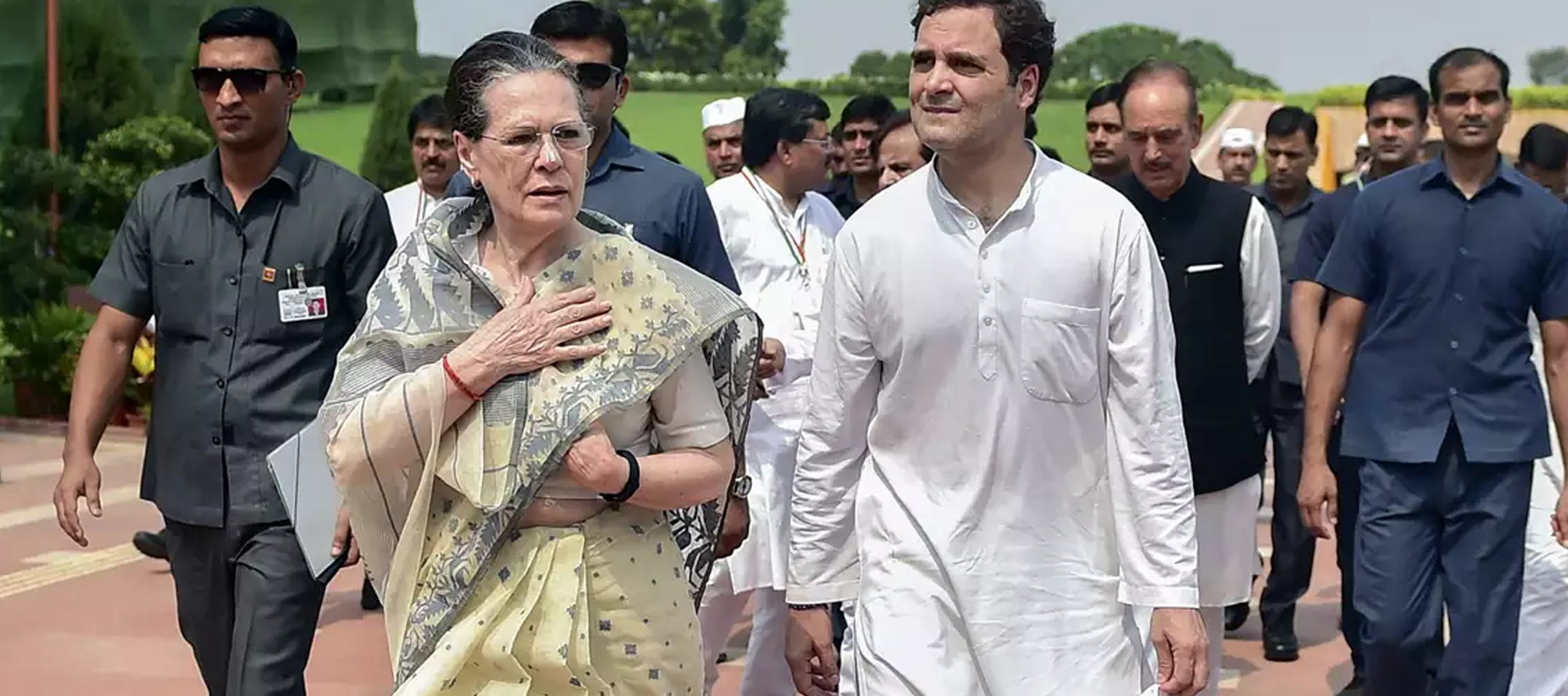
The Gandhi family will no longer have Special Protection Group (SPG) cover, the government has decided, according to home ministry sources. Congress president Sonia Gandhi, her children Rahul Gandhi and Priyanka Gandhi Vadra will now have Z Plus category protection.
Z Plus security means each of the Gandhi’s will be guarded by around 100 personnel of the Central Reserve Police Force (CRPF).
The SPG, an elite force of 3,000, are now tasked with protecting only Prime Minister Narendra Modi. The SPG was set up or the security of prime ministers and their families in 1985, a year after Indira Gandhi was assassinated by her bodyguards.
After the assassination of Rajiv Gandhi, the SPG Act was amended to provide security to former PMs and their families for 10 years. In 2003, the Atal Bihari Vajpayee-led BJP government amended the law again to bring down the automatic protection for 10 years to one year or more depending on the level of threat as decided by the centre.
The Gandhi family, which has seen the assassination of two members, has always been among India's most protected, apart from the Prime Minister and a select few.
But government sources say the big move to withdraw SPG to the family is part of a review that will be carried out every five years.
In August, the government had withdrawn former Prime Minister Manmohan Singh's SPG cover.
Similar security was also withdrawn from former PMs HD Deve Gowda and VP Singh. Mr. Vajpayee had SPG cover till he died in 2018.
-
IIT Delhi to Set up Space Technology Cell in Collaboration with ISRO
The Indian Institute of Technology (IIT) Delhi is going to set up a space technology cell in collaboration with the Indian Space Research Organization (ISRO). The announcement was made by IIT Delhi Director V Ramgopal Rao, a day ahead of the varsity's 50th annual convocation where ISRO Chief K Sivan will be the chief guest.
With the move, IIT Delhi will join the league of other premiere institutions like IISc Bangalore, IIT Bombay, IIT Kanpur, IIT Kharagpur, IIT Madras, IIT Guwahati and IIT Roorkee where the Space Technology Cells (STCs) have been set up to play a major role in taking up the space technology research and applications to the newer heights
-
Kolkata students create Guinness World Records for largest astrophysics assemble
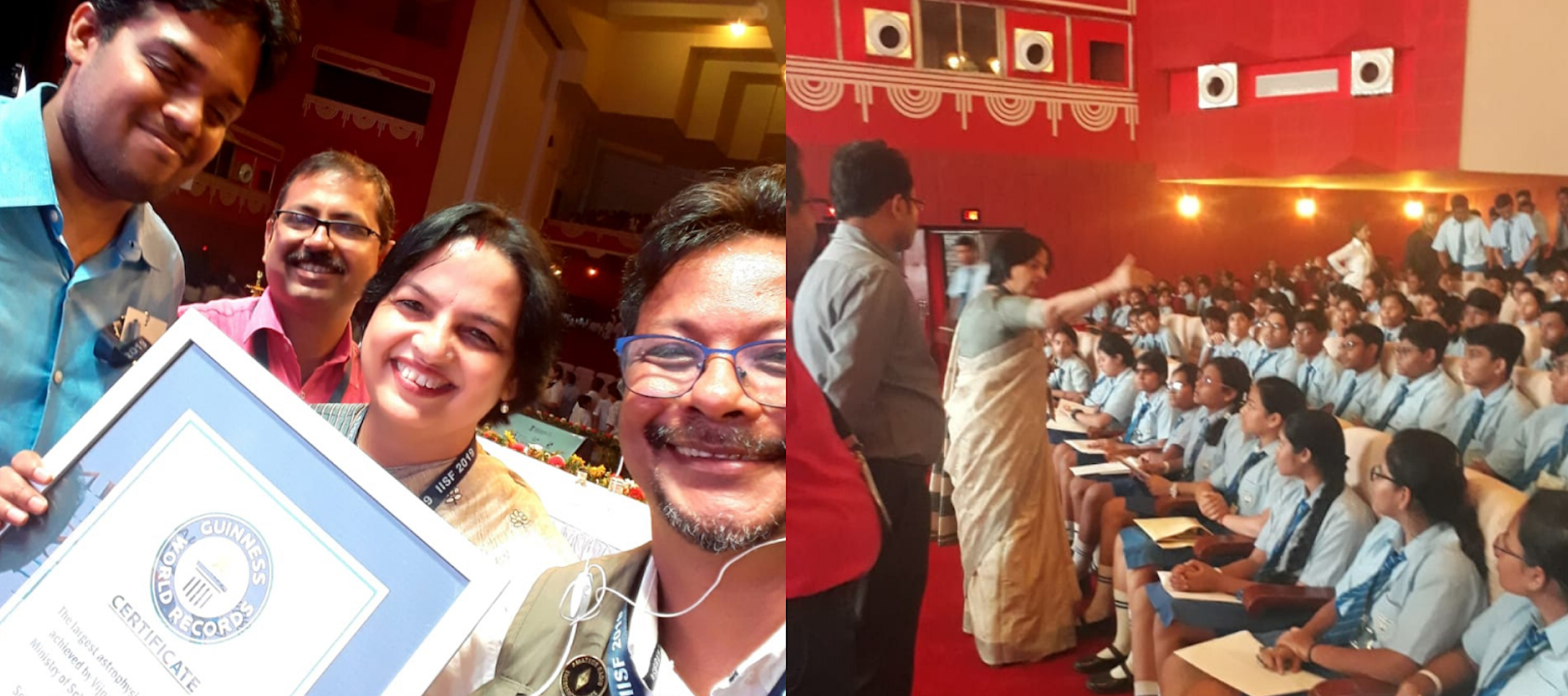
The Guinness World Records for the largest astrophysics lesson (45 minutes) and assembly of spectroscopes was successfully achieved by Kolkata students at Science City, Kolkata. The record was attempted on the first day of 5th India International Science Festival (IISF) 2019 in which over 1,598 students participated. The session was dedicated to Meghnad Saha and Chandrasekhara Venkata Raman.
The session was organized by Inter-University Centre for Astronomy and Astrophysics, who were conferred a memento at the end of the programme, on behalf of the Guinness Book of World Records. Spectroscopes are used by Astronomers to know details such as temperature, chemical composition, etc. of celestial objects hundreds or millions of light years away from Earth. Moreover, a small personal model of advanced spectroscopes can be easily made by anyone using a box made of cardboard that has a very narrow window used to channel light into spectroscope. Then a piece of a Compact Disc is used to split the light by a process called diffraction.
5th India International Science Festival (IISF) 2019: IISF is the largest science festival in the world. Kolkata is the host city of the 5th IISF-2019. The city is home to renowned scientific institutions that have been workplace of pioneering scientists who gave shape to science in India.
-
IIT-Madras launches country’s first standing wheelchair
Indian Institute of Technology (IIT-Madras) has launched the country’s first indigenously designed standing wheelchair. The project, in collaboration with Phoenix Medical Systems, enables a differently-abled person requiring a wheelchair to shift from sitting to standing position, and vice versa, independently and in a controlled manner.
The wheelchair ‘Arise’ was launched in the presence of Union Minister of Social Justice and Empowerment Thawarchand Gehlot at the institute.
Union Minister Gehlot lauded IIT-Madras for its initiative, and also recalled the Narendra Modi government’s various welfare measures for the ‘divyang’, including setting up five national-level sophisticated sports centres for differently-abled sportspersons in different parts of the country.
The device was designed and developed by the TTK Center for Rehabilitation Research and Device Development (R2D2). “Called Arise, the standing wheelchair was designed and developed by the TTK Center for Rehabilitation Research and Device Development (R2D2) at IIT Madras headed by Sujatha Srinivisan in the Department of Mechanical Engineering, IIT Madras. The project also got support from foreign countries like the United Kingdom.
-
'Red Atlas Map' unveiled for flood mitigation in Chennai
Vice-President M Venkaiah Naidu unveiled the 'Red Atlas Action Plan Map,' a first of its kind ready reckoner, prepared by the Ministry of Earth Sciences to aid Tamil Nadu government in effective flood mitigation in Chennai which witnessed the worst deluge in 2015. The atlas, with probable scenarios for different rainfall periods, aims at flood mitigation, preparedness, operations and management aspects. The manual provides information, including on corporation wards that are likely to be affected due to flooding, and the areas that may need evacuation in Chennai taking into account all historical datasets.
Both the atlas and the 'Coastal Flood Warning System App (CFLOWS-Chennai)', which was launched by the Vice-President are intended as decision support systems covering aspects, including preparedness and prevention. The CFLOWS-Chennai is a complete webGIS-based decision support system that can be used both for mitigation planning operations before flooding and in real time to for aspects like relief work. Such initiatives to effectively tackle urban flooding are likely to be replicated in cities including Mumbai. CFLOWS is an integrated system that involves coupling models of regional weather forecasts, storm surges and captures about 796 flood scenarios.
The over 200-page atlas was prepared by the National Centre for Coastal Research, India Meteorological Department and National Centre for Medium Range Weather Forecasting in association with TN State Disaster Management Authority and Greater Chennai Corporation.
-
Government to set up women help desks, anti-human trafficking units using Nirbhaya Fund
Government will be setting up women help desks in all police stations and anti-human trafficking units in all districts across India using the NIRBHAYA Fund. The announcement was made by Union Women and Child Development Minister Smriti Irani. Irani said that the initiative is an example of interdepartmental cooperation leading to effective governance. This is the first-ever initiative to be implemented using NIRBHAYA Fund. The move aims at addressing the safety issues of women and children.
The women help desks, would be gender-sensitive desks that will be aimed at grievance redressal of women through the policing system and for improved community interaction of the police with a focus on crime against women and children. The help desks also aim to create a conducive atmosphere for distressed women and girls to approach the police stations without any hesitation and fear.
The move aims at strengthening women safety and instil a greater sense of security among them. It is expected to go a long way in ensuring the safety of women and children.
The Nirbhaya Fund was set up by the Union Government in 2013 after the tragic gang rape and fatal assault case on December 16, 2012 in New Delhi. The fund was set up to support initiatives by the government and non-governmental organizations to protect the dignity and ensuring the safety of women and children in the country. The Government contribution to the fund included Rs 1000 crores for the empowerment, safety and security of women and girl children. The Fund is administered by the Department of Economic Affairs, under the Union Finance ministry.
Nirbhaya, which means fearless, was the name given to the 2012 Delhi gang-rape victim to hide her actual identity.
The Empowered Committee (EC) under Nirbhaya framework, which was chaired by WCD Secretary Rabindra Panwar evaluated two proposals on October 22 to develop operationalization systems for the working of the women's help desks in police stations. The proposals were for the expansion of anti-human trafficking units (AHTUs) to all districts. Currently, the units are functional in 146 districts of the nation.
The Women and Child Ministry had asked the Home Ministry to sanction Rs 100 crore each for setting up of the help desks at 10,000 police stations and the expansion of AHTUs.
International News
-
Australian High Commission Announces 2020 New Colombo Plan India Mobility Grants
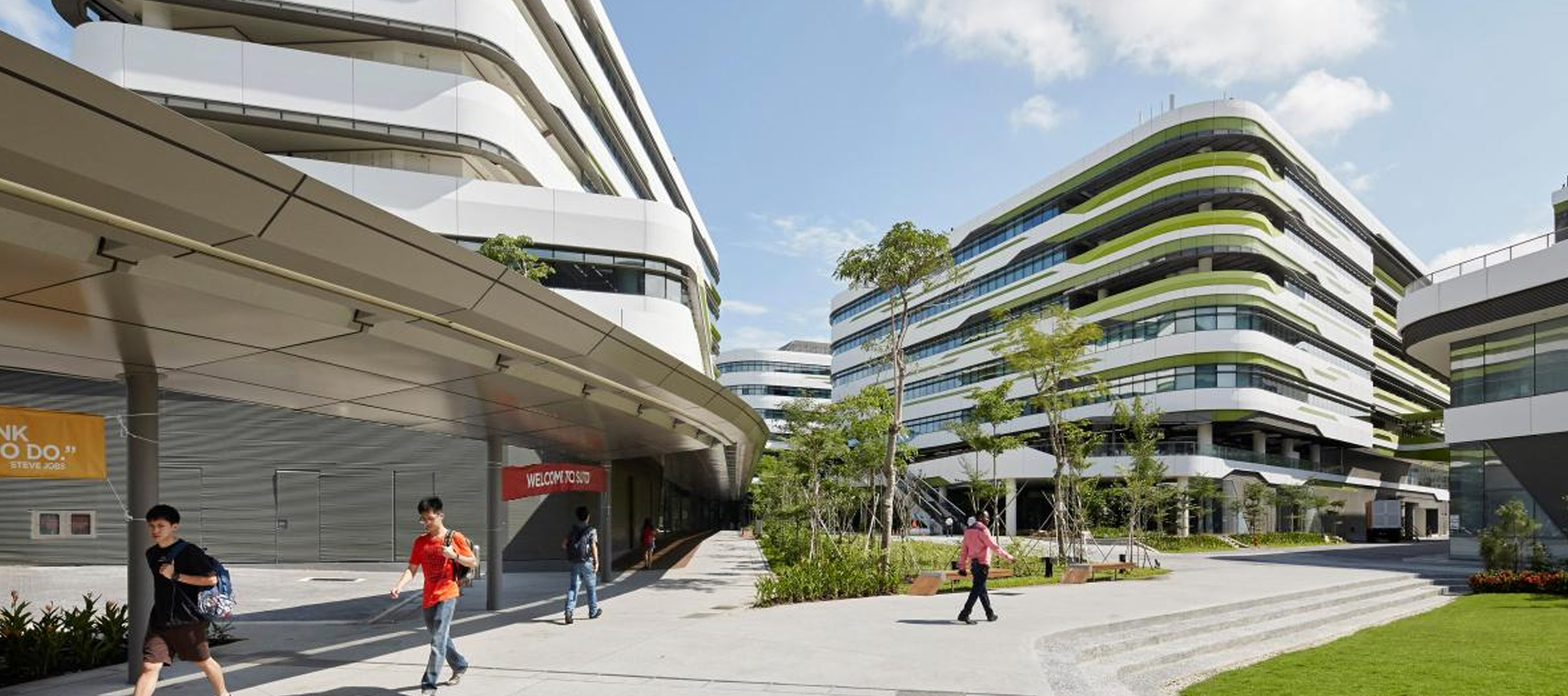
The New Colombo Plan Mobility Program is a signature initiative of Government of Australia, which will provide Australian University students the opportunities to gain cross-cultural awareness and experiences that are vital to today’s globally connected workforce.
According to a recent announcement made by the Government of Australia, 1, 607 university students from Australia will be undertaking a study and work-based experience in India. This is as part of the 2020 New Colombo Plan Mobility Programme. India remains one of the most popular destinations for students from Australia under the programme.
Australian universities will send students through 64 existing projects in India which includes the development of Indian Physical Education Programmes and Programme on improving organic waste management and drinking water quality. The New Colombo Plan is an initiative taken by the Australian Government by providing the students an opportunity to gain cross-cultural awareness and experiences which are considered important with respect to the present world which is a connected workforce.
Along with the 1, 607 students who will receive the mobility grants, six Australian undergraduate students will also be given the New Colombo Plan Scholarship in order to study, live and take up internships in Indian in 2020.
In the 2020 round of the Mobility Programme the New Colombo Plan will be able to support close to 11, 196 students from 40 Australian Universities to participate in 685 projects spread across 36 locations across the Indo-Pacific.
-
Guyana has an economy growing at 86%
Guyana, a country of 780,000 that neighbors Brazil and Venezuela in the region’s northeast corner, will see its economy balloon 86 per cent next year after expanding 4.4 per cent this year, according to the International Monetary Fund. That’s 14 times the projected pace of China and driven by Exxon Mobil Corp.’s discovery of oil.
It owes the anticipated windfall to offshore oil deposits discovered in 2015. At the moment, the country doesn’t produce any crude, though its neighbor Venezuela holds the world’s largest reserves. While Guyana’s $4 billion annual gross domestic product is about a tenth the size of Vermont’s, it will expand to about $15 billion by 2024, according to the IMF.
The government plans to use some of the money derived from its royalties to build highways to connect coastal towns to the sparsely populated interior, which has gold, diamond and bauxite deposits. The oil sector will represent about 40% of the economy within five years, the IMF calculates. The government expects the initial $300 million a year in revenue from profit-sharing and royalties to more than double after a second offshore well starts production around 2022. That money will go directly to a sovereign wealth fund the country established this year, which will be used for “inter-generational” savings, to protect against oil price swings, and to fund development plans, Jordan said.
-
India opts out of RCEP agreement
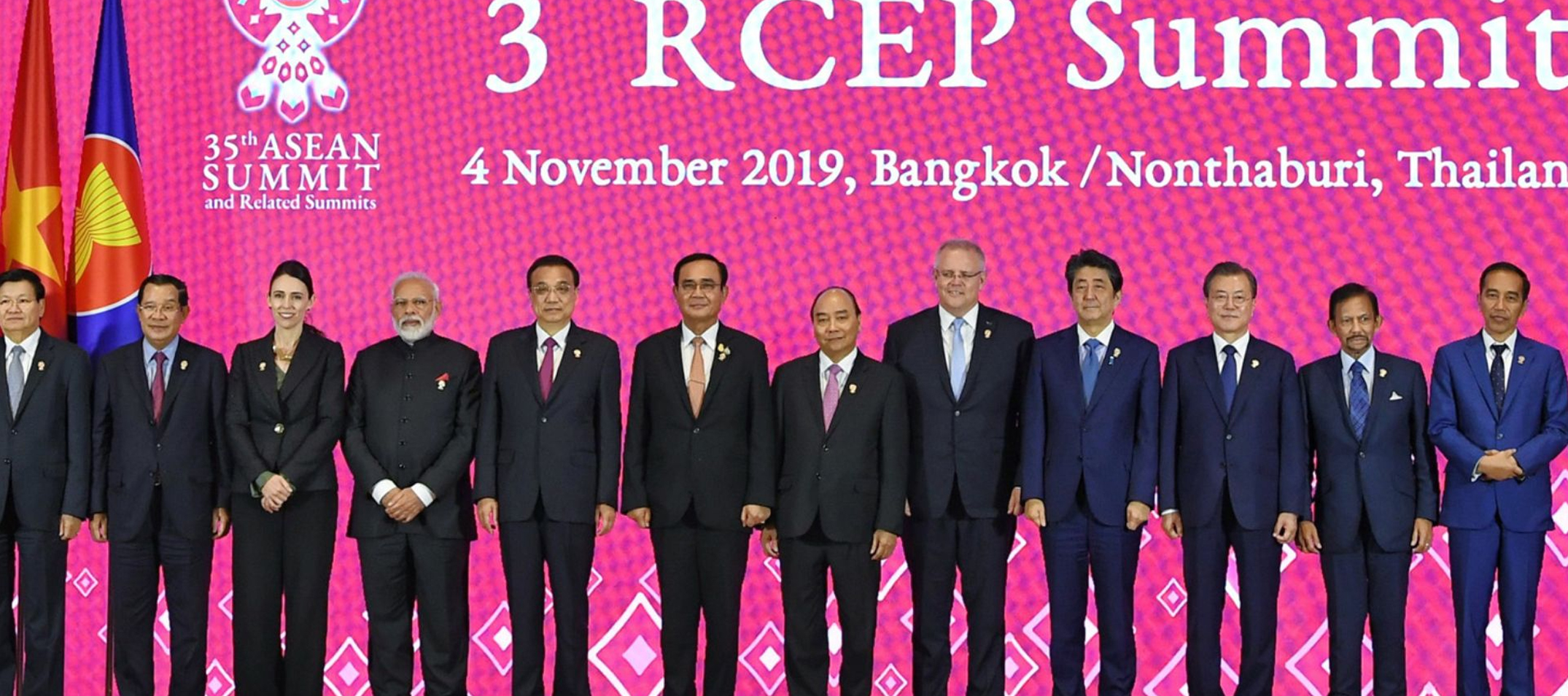
India decided not to join the Regional Comprehensive Economic Partnership (RCEP) after it failed to address India’s key concerns. Prime Minister Narendra Modi made the announcement while speaking at the 2019 RCEP Summit in Bangkok on November 4, 2019. The RCEP summit saw participation from many world leaders. PM Modi, in his speech, said that India backs greater regional integration, freer trade and adherence to a rule-based international order.
PM Modi continued by saying that India has been proactively, constructively and meaningfully engaged in the RCEP negotiations since inception, however, during the 7 years of RCEP negotiations many things including global economic and trade scenarios have changed. The Prime Minister said that India cannot overlook these changes and added that the present RCEP Agreement doesn’t properly reflect RCEP’s basic spirit.
The Prime Minister concluded by saying that he cannot compromise the interests of the Indian farmers and workers by joining the trade deal to gain larger market access. India was looking for more protection of its domestic industry and agricultural sector from the surge of imports under the deal, especially from China. Since the deal could not offer any such specific protection, India decided not to join it to protect the national interest, protect the poor and stop unfair imports. The decision came as the opposition racked up pressure on the government to pull out of RCEP.
-
U.S. Withdraws From Paris Accord, Ceding Leadership To China.
President Donald Trump announced America’s formal withdrawal from the Paris Climate Accord, marking its latest abdication of global multilateral obligations. The implications will be far-reaching. The U.S. is ceding the leadership of international energy policy to the People’s Republic of China. The People’s Republic of China is currently the world’s largest producer of wind and solar energy and the largest investor in green energy projects. Five of the world’s six largest solar manufacturing companies can be found in China, as well as the world’s largest wind turbine manufacturer.
The concept of global warming was created by and for the Chinese in order to make U.S. manufacturing non-competitive. China is the world’s largest market for renewables, installing more wind and solar last year than the U.S., EU, Canada, India, Japan, Korea and Brazil combined (almost 65 GW). China’s wind capacity at the beginning of 2018 led the world with around 187 gigawatts (GW), compared to second place US with 89 GW and third place Germany with 56 GW. China’s cumulative installed solar capacity is 185.5 GW while the United States has yet to break 70 GW. America’s withdrawal will also give other major emitters justification to not pick up the tab for future climate adaptation and mitigation costs. The United Kingdom, which this year became the first G20 economy to legislate for a ‘net zero’ 2050 emissions target, just saw its Chancellor renege on government pledges as outlined by their July Green Finance strategy.
-
India ‘Guest of Honour Country’ at China’s International Import Expo
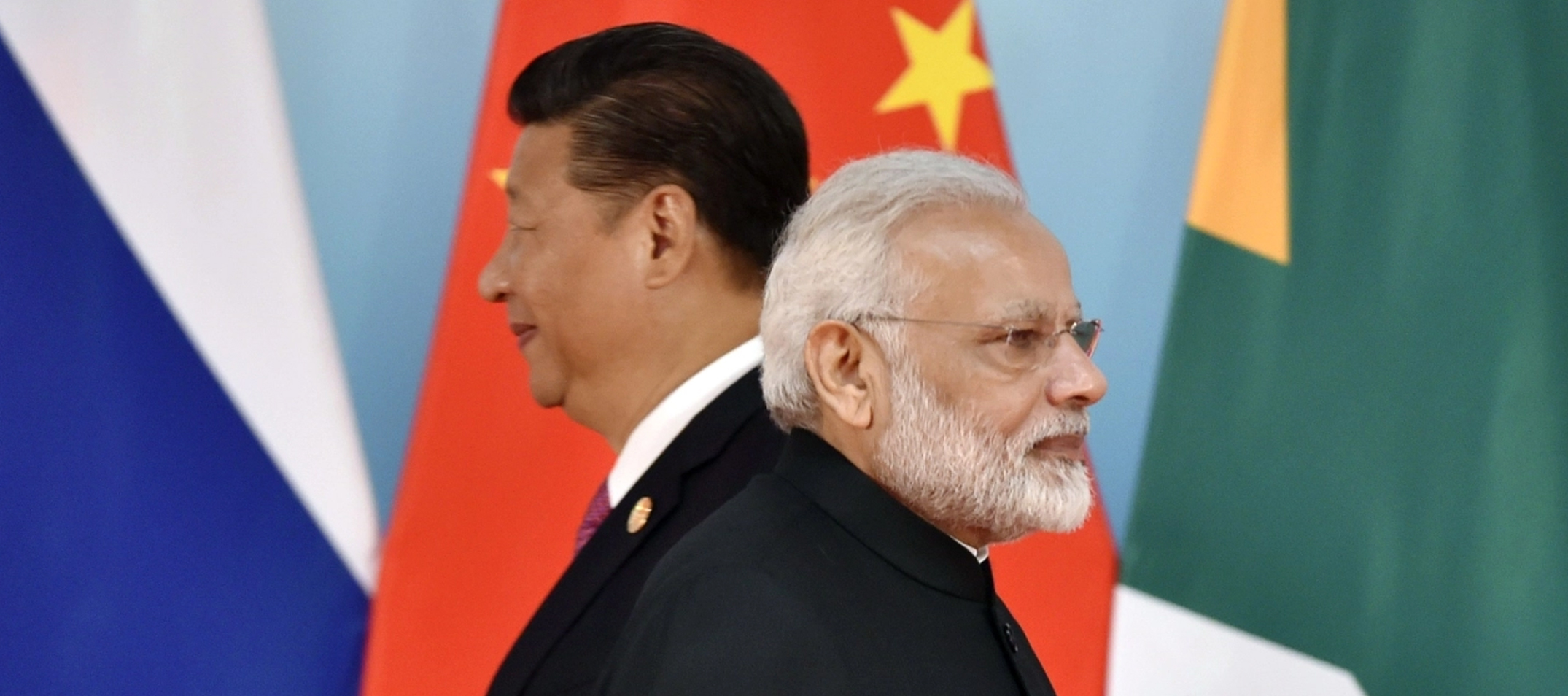
India will be one of the ‘Guest of Honour Country’ at China’s second International Import Expo (CIIE) to be opened in Shanghai on November 5 where it plans to make a strong pitch for exports of its Pharma, IT and agricultural products among others. In this year’s expo to be inaugurated by Chinese President Xi Jinping, India is among the 15 Guest Countries of Honour. Guests and representatives from over 170 countries and regions have been invited to attend the expo. More than 5,00,000 buyers and visitors from home and abroad are expected at the expo.
-
The US, Bangladesh Navy exercise began in Chattogram
A naval exercise Cooperation Afloat Readiness and Training (CARAT) 2019 between the US and Bangladesh, began in Chattogram, Bangladesh, on 4 November 2019. It was announced by the Inter-Services Public Relations (ISPR) wing of Bangladesh armed forces. The exercise is provided with different subject-based training and exercise.
Exercise CARAT aims to provide an opportunity to gain a better understanding of the operational activities of the US and Bangladesh navies of the two countries. The main objective of the naval exercise is to get acquainted with advanced technology through various theoretical and practical training.
Exercise CARAT is bilateral military exercises conducted by the United States Pacific Fleet every year with ASEAN member countries. Currently, the navies of Bangladesh, Malaysia, the Philippines, Singapore, Sri Lanka, Brunei, Cambodia, Indonesia, and Thailand participated. The exercise aims to enhance regional cooperation, friendships, and professional skills among the countries. In 2010, Cambodia and Bangladesh became the first participants to join the exercise.
-
ADB Provides $451 Million to Strengthen Power Connectivity in Tamil Nadu
The Asian Development Bank (ADB) has approved a $451 million loan to strengthen power connectivity between the southern and northern parts of the Chennai–Kanyakumari Industrial Corridor (CKIC) in Tamil Nadu, India.
It will allow more power, including renewable energy, to be transferred from new generation facilities in the south CKIC to the north, where it is most in demand. This will help promote economic development by delivering a more reliable and competitive power supply for industry and services in the state, which will in turn spur jobs and improve livelihoods.
Tamil Nadu had the second largest economy among India’s states in 2018, with a gross domestic product of $250 billion. However, the state government has identified quality infrastructure including a reliable power supply as a key prerequisite for further economic development. As a key component, ADB has been in assisting in developing CKIC, which covers 23 of the state’s 32 districts and 70% of the state population. The state is aiming to develop the northern Chennai–Tiruchirappalli area of CKIC as a manufacturing center while targeting the relatively poor southern Madurai–Thoothukudi portion for the development of renewable energy-based power generation because of the availability of wind and solar resources.
-
US university to collaborate with AIIMS, Kasturba Medical College on genetics

A top American university will expand genetic testing in India in partnership with the All India Institute of Medical Sciences in Delhi and Kasturba Medical College in Manipal.
A USD 2.3 million grant from the National Institute of Health over five years will help the University of Michigan and Indian geneticists identify and confirm genetic changes that are the basis of developmental disorders.
Seven out of 10 children with developmental disorders in India do not receive genetic testing, the university said the study hopes that with greater access to genetic testing, children with developmental disorders of genetic origin will be more likely to receive a molecularly confirmed diagnosis.
Researchers hope that uncovering this genetic diversity will provide a better understanding of the human genome and differences in the presentation of inherited developmental disorders. The researchers also want to establish an accessible database that can be shared with other scientists and institutions for research and to contribute to the responsible development of genomic medicine in India and beyond.
-
Iran resumes uranium enrichment, raising concern from signatories to 2015 nuclear deal
Iran has resumed uranium enrichment at its underground Fordow plant south of Tehran in a new departure from its commitments under a landmark 2015 nuclear deal. The suspension of uranium enrichment at the long secret plant was one of the restrictions Iran had agreed to on its nuclear programme in return for the lifting of UN sanctions. It has drawn a chorus of concern from the remaining parties to the troubled agreement. Britain, China, France, Germany and Russia have been trying to salvage the hard-won deal since Washington abandoned it in May last year and reimposed crippling unilateral sanctions.
The resumption of enrichment at Fordow is Iran's fourth move away from the deal. Uranium enrichment is the sensitive process that produces fuel for nuclear power plants but also, in highly extended form, the fissile core for a warhead. Iran has always denied any military dimension to its nuclear programme.
Iran's latest move comes after the passing of a deadline it set for the remaining parties to the 2015 nuclear agreement to come up with a mechanism that would allow foreign firms to continue doing business with Iran without incurring US penalties. Russian Foreign Minister Sergei Lavrov expressed concern about Tehran's announcements but said European powers should do their part. The Kremlin had previously called sanctions against Iran as unprecedented and illegal.
-
Russia re-enacts historic wartime parade

Russian troops wearing World War II uniforms marched across Moscow's Red Square in memory of the historic 1941 parade, when Soviet soldiers went directly to the battlefield to fight the Nazis.
The annual re-enactment featuring some 4,000 troops and T-34 tanks commemorated the legendary November 7, 1941 parade whose participants marched from Red Square to the front line, becoming a symbol of courage and patriotism. Nearly 7,000 guests including World War II veterans watched the parade. The Red Army's triumph in the deadliest war in history is seen as a huge point of pride in Russia.
In recent years, the victory in the 1941-1945 conflict known in Russia as the Great Patriotic War has acquired signs of cult status.
-
Kalapani an integral part: Nepal objects inclusion of unresolved territory as part of India in new maps
A few days after India redrew the political map of Jammu and Kashmir after scrapping Article 370, the Nepal government strongly objected to the inclusion of 'Kalapani' under the Indian Territory.
In the new political maps released by India, Pakistan-occupied Kashmir is part of the newly created Union Territory of Jammu and Kashmir while Gilgit-Baltistan is in the Union Territory of Ladakh.
However, the Nepal government made it clear that Kalapani is an integral part of the country and that talks are still on between New Delhi and Kathmandu over this "unresolved" area.
The inclusion of Kalapani into the Pithoragarh district of Uttarakhand has been objected by Nepal as it considers the unresolved territory part of the Darchula district in Nepal.
Economy News
-
The Indian Army will have the first regiment, using Dhanush artillery guns, in place by March 2020

Dhanush is the first indigenous long-range artillery gun. It has been developed by Ordnance Factory Board (OFB), Kolkata and manufactured by the Jabalpur-based Gun Carriage Factory. The design of Dhanush is based on the Swedish Bofors Haubits FH77 which India imported in the 1980s. Dhanush gun was officially inducted in Indian Army in April 2019. It has a caliber of 155mm x 45mm. It has a range of 36km and has demonstrated a range of 38 km with specialized ammunition. The gun is fitted with an inertial navigation system having global positioning system (GPS)-based gun recording and auto-lying, and an enhanced tactical computer for on-board ballistic computations. It also has an on-board muzzle velocity recording, an automated gun sighting system equipped with camera, thermal imaging, and laser range finder.
-
Govt suggests 9-hour workday, but avoids fixing a minimum wage in draft rule
The Indian government has suggested a nine-hour normal working day in its draft wage code rules, but has stayed away from fixing a national minimum wage. However, the draft rule creates ambiguity while underlining that eight hours of daily work will be calculated for 26 days of work a month for fixing monthly salary, an existing rule for decades.
-
Customs, GST relief to give Rs.60,000 crore boost to defence

Union Minister of Defence Rajnath Singh said that the defence budget would be augmented by more than Rs.60,000 crore over the next five years. The estimation is because the MoD is to be exempted from the customs duty and goods and services tax (GST), which began on 1 October 2019. The estimates announced by the Rajnath Singh- led defence ministry showed that the exemptions from two levies would significantly impact its budget and free up resources for modernization and replenishment of equipment.
The defence ministry was severely affected by the imposition of customs duty in 2016 on all military equipment imports, which was followed by the GST in the year 2017. The two levies were aimed to promote the indigenous production of defence equipment. But it became evident that there was a lack of capability to produce certain items locally.
-
Finance Minister Launches two new IT Initiatives -ICEDASH & ATITHI for improved monitoring and pace of Customs clearance of imported goods and facilitating arriving international passengers
Union Minister of Finance and Corporate Affairs, Smt Nirmala Sitharaman unveiled two new IT initiatives – ICEDASH and ATITHI – for improved monitoring and pace of Customs clearance of imported goods and facilitating arriving international passengers by electronic filing of Customs baggage and currency declarations.
The ATITHI app will facilitate hassle free and faster clearance by Customs at the airports and enhance the experience of international tourists and other visitors at our airports. ICEDASH is an Ease of Doing Business (EoDB) monitoring dashboard of the Indian Customs helping public see the daily Customs clearance times of import cargo at various ports and airports. With ICEDASH, Indian Customs has taken a lead globally to provide an effective tool that helps businesses compare clearance times across ports and plan their logistics accordingly. This dashboard has been developed by CBIC in collaboration with NIC. ICEDASH can be accessed through the CBIC website. With ATITHI, CBIC has introduced an easy to use mobile app for international travelers to file the Customs declaration in advance. Passengers can use this app to file declaration of dutiable items and currency with the Indian Customs even before boarding the flight to India. ATITHI is available on both, iOS and Android.
-
Ministry of Skill Development & Entrepreneurship launches Skills Build platform in Collaboration with IBM
The Directorate General of Training (DGT) under the Ministry of Skill Development & Entrepreneurship (MSDE) has announced the launch of Skills Build platform in collaboration with IBM. The skill builds platform aims to offer diplomas in IT, networking and cloud computing at Industrial Training Institutes (ITI) and National Skill Training Institutes (NSTI).
The platform will also be extended to train ITI and NSTI faculty on AI skills for future work.
This initiative is part of IBM’s global commitment to create a job-ready workforce and to build the next generation of skills needed for new collar careers.
The platform is deployed with the support of IBM Volunteers along with the NGOs who will offer students personalized coaching and experiential learning opportunities.
National Skill Training Institute (NSTI) is one of the premier institutes run by the Directorate General of Training (DGT), Ministry of Skill Development and Entrepreneurship, Govt. of India.
It was initially set up by the Directorate General of Employment and Training (DGE&T), Ministry of Employment and Labour, Govt. of India in the year 1963.
The main objective of NSTI is to impart training to the instructors of ITIs in the country. It also aims to impact Quality training & upgrading skills of the industrial workforce in emerging areas.
-
Modi Cabinet clears Rs 25,000 cr special fund for stalled housing projects, announces Nirmala Sitharaman
In a bid to provide relief to real estate sector Finance Minister Nirmala Sitharaman announced AIF (Alternative Investment Fund) for the stalled affordable and middle-income houses. Notably, developers have been unable to hand over these homes to the buyers. The industry insiders have hailed the move by the Central Cabinet decision as it will help them meet the required funds that have led to their projects being stuck for long. Rs 25,000 crore fund has been allocated for the affordable and middle-income real estate projects that have been stalled for long. This fund will be made available under the AIF — Alternative Investment Fund — to those real estate developers whose net worth is positive. Failing this, the NCLT will handle the case. The Centre will be the sponsor of the Rs 25,000 crore AIF and infuse up to Rs 10,000 crore in it. State Bank of India (SBI) and Life Corporation of India, sovereign and pension funds would also contribute to the fund. The fund will help nearly 1,600 stalled housing projects.
-
'Google Pay for Business' launched in Chennai, to help MSMEs with payments
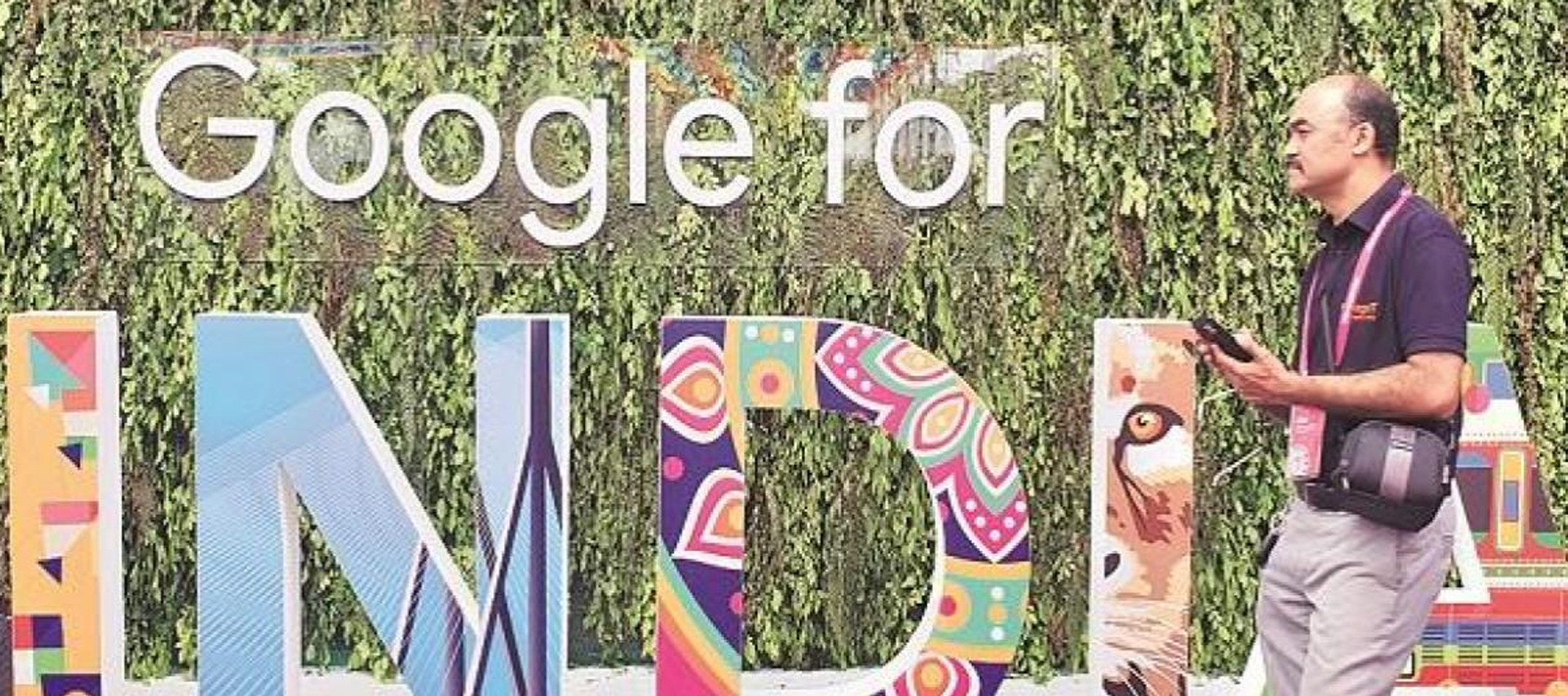
Google Pay, the digital payments provider launched Google Pay for Business app, targeting small and medium size businesses.
The mobile application enables small and medium businesses to adopt digital payments that vastly reduces hassle and time required in completion of paperwork and verification. To further expand the merchant based digital payments, Google Pay has collaborated with Pine Labs and Innoviti to enable UPI payments across POS terminals, two lakh stores in over 3,500 cities and towns.
'Google Pay for Business' transfers each rupee earned by the merchant directly into their UPI-linked bank account, it said.
-
GRSE entrusts ICGS Annie Besant to Coastguard
Gardenerich Shipbuilders and Engineers Limited (GRSE) handed over the Fast Patrol Vessel 'ICGS Annie Besant' to the Indian Coast Guard. Built at GRSE's shipyard, this fast patrol vessel is equipped with state-of-the-art navigational and communications equipment and is the second of five FPV class patrol vessels assigned to the Coast Guard.
A medium-range patrol vessel 50 meters long, 7.5 meters wide and weighing 308 tons is equipped with state-of-the-art equipment. It is capable of multi-purpose operations in the Indian maritime sector such as surveillance at sea, expeditions against smugglers and pirates, search and rescue etc. This patrol vessel is equipped with three main engines, integrated bridge system and advanced machinery control system. Also equipped with 40/60 guns and armaments. The ship has all types of facilities with fully air-conditioned modular accommodation to accommodate 35 personnel. GRSE has built this ship according to the requirements of the Coast Guard.
-
Khadi gets separate unique HS code, exports to get a boost

The Ministry of Commerce and Industries has allocated a separate HS code for Khadi. HS stands for Harmonized System and it is a six digit identification code. It was developed by the WCO (World Customs Organization) and custom officers use HS Code to clear every commodity that enters or crosses any international border. Governments use HS codes and product descriptions to detect fraudulent activities.
Earlier, Khadi did not have its exclusive HS code. As a result, all the data regarding export of this signature fabric used to come as a normal fabric under the textile head. Recognizing its potential to generate exports and its significance as an eco-friendly product, the Ministry of Commerce had accorded deemed Export Promotional Council Status (EPCS) to KVIC in 2006, to boost the export of Khadi products. However in the absence of separate HS code, the export of Khadi products was difficult to categorize and calculate.
-
CBIC’s DIN system to come into effect on November 8
The Documentation Identification Number (DIN) system of Central Board of Indirect Taxes (CBIC) will come into existence from 8th November 2019.
The DIN system in indirect tax administration has been created as per the direction of Union Minister for Finance and Corporate Affairs Smt. Nirmala Sitharaman.
CBIC communication will have to have a Documentation Identification Number. Government has already executed the DIN system in the direct tax administration. To begin with, in the indirect tax administration, the DIN would be used for search authorization, summons, arrest memo, inspection notices and letters issued in the course of any enquiry. From now onwards, any communication from GST or Custom or Central Excise department without a computer generated DIN, would be treated as invalid and shall be non est in law or deemed to be as if it has never been issued. The DIN system would ensure greater accountability and transparency in the indirect tax administration as well. It would also provide the taxpayer a digital facility to verify any communications. Further, the DIN system would be extended to other communications by the end of next month. No communication would be issued without DIN except only if it is in the specified exceptional circumstances.
-
GeM works with Rural devt ministry, artisan clusters, state emporia
Government e-Marketplace (GeM) is working with the Rural Development Ministry, State Government Emporia and Development Commission Handicrafts to onboard Self-Help Groups (SHGs) and artisan clusters on GeM. The products will be categorized as Emporium Products where the unique items produced by India’s artisans will be available on GeM.
-
Coast Guard conducts two-day rescue exercise off Goa shore
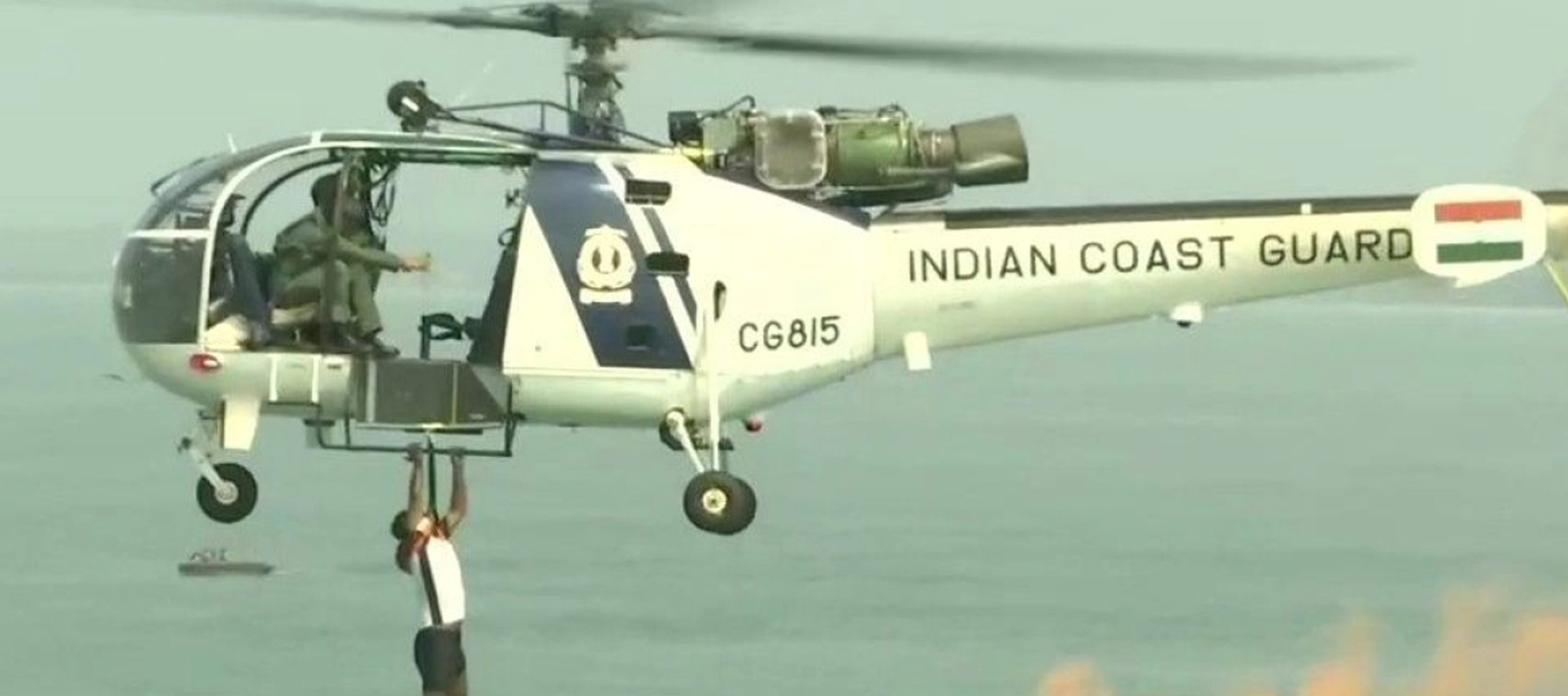
The Indian Coast Guard (ICG) tested its efficiency and preparedness during the Regional Level Search and Rescue Workshop and Exercise 2019 (ReSAREX- 19) conducted off Goa coast.
The two-day event, organized by the Coast Guard District Headquarters-11 (Goa), comprised a search and rescue workshop and table top exercise, followed by a search and rescue exercise at sea. Maritime search and rescue remains a challenge with increase in maritime and fishing activities, further complicated by frequent cyclones.
-
India, Indonesia joint naval exercise 'Samudra Shakti' underway in Bay of Bengal
Anti-submarine warfare corvette INS Kamorta is jointly exercising with Indonesian warship KRI Usman Harun, a multi-role corvette, in the Bay of Bengal as part of an ongoing bilateral exercise 'Samudra Shakti'. The joint exercises include, manoeuvres, surface warfare exercises, air defence exercises, weapon firing drills, helicopter operations and boarding operations.
People in News
-
IPS officer Aditya Mishra appointed chairman of Land Ports Authority of India
Senior IPS officer Aditya Mishra was appointed as the chairman of the Land Ports Authority of India (LPAI). LPAI develops, sanitizes and manage the facilities for cross-border movement of passengers and goods at designated points along the international borders of India.
-
Serbia’s Sara Damnjanovic crowned Miss Asia Global 2019
Serbia’s Sara Damnjanovic has been crowned ‘Miss Asia Global 2019’ at the international beauty contest held recently in Kochi, Kerala. While Vietnam’s Nguyen Thi Yen Trang won the ‘Miss Asia’ title, Samiksha Singh from India took home the sub-title of ‘Miss Beautiful Face’.
Miss Asia Global, one of the finest beauty pageants from the house of Pegasus, aims to find the most beautiful and talented women from all over the globe.
-
Sheikh Khalifa bin Zayed Al Nahyan re-elected as President of UAE

President H.H. Sheikh Khalifa bin Zayed Al Nahyan has been re-elected as the President of the UAE.
President Sheikh Khalifa was first elected President of the UAE by the Supreme Council of the Union on 3rd November, 2004. President His Highness Sheikh Khalifa accompanied the builder of the UAE renaissance, the late Sheikh Zayed bin Sultan Al Nahyan, in the founding stage in the 70s and 80s of the last century. After the death of the Founding Father, he led the country and contributed to the prosperity of the UAE, and its prominence locally and globally.
The UAE's Supreme Council of the Union has re-elected His Highness Sheikh Khalifa bin Zayed Al Nahyan as its President for a fourth five-year term, in accordance with the provisions of the UAE Constitution.
-
Google India appoints former Star and Disney head Sanjay Gupta as new Country Manager
After keeping its top India position vacant for eight months, Google has appointed Sanjay Gupta as its new country manager and vice president of sales and operations. Gupta succeeds Rajan Anandan, who left Google to join Sequoia Capital India as its managing director.
Awards
-
Madhuri Vijay wins JCB Prize for Literature 2019 for her debut novel, The Far Field

Madhuri Vijay has won the JCB Prize for Literature 2019 for her debut novel, The Far Field. The winner was announced by Sir Mark Tully in a live broadcast on social media. Vijay has been selected from a shortlist featuring novels from five accomplished writers.
The story of The Far Field poignantly internalizes the turbulent politics of Kashmir, as Vijay's protagonist, Shalini, packs her privileges and curiosities, and sets off on a soul-searching journey to the mountains, all the way from her (and the author's) hometown, Bengaluru.
-
Real Kashmir FC's BBC Documentary Wins at BAFTA Scotland
Real Kashmir FC's BBC documentary has won the 'Single Documentary' category at the British Academy Film and Television Arts (BAFTA) or BAFTA Film Awards Scotland. The football club from Kashmir has been breaking barriers ever since it was promoted to the top division I-League after becoming the champions of I-League second division in the 2017-18 season.
Last year, Real Kashmir FC finished third in their debut season in the I-League after competing for the title for almost the entirety of the season. Real Kashmir had also recently signed a British citizen of Indian descent, Kashif Siddiqi. Siddiqi, who has represented the Pakistan football team as an "overseas British South Asian footballer" is the co-founder of 'Football For Peace (FFP)'.
-
West Bengal based writer Abhisek Sarkar won award at Dhaka Lit-fest

The ninth edition of the Dhaka Lit-fest started book lovers thronging the venue ground at the Bangla Academy. The three days of the festival, 200 speakers, performers, and thinkers take part in discussions on diverse topics.
The special focus of this year's lit-fest is on Indigenous Languages as the UNESCO marked 2019 as the year of Indigenous Language Protection. The literary personalities and authors from Bangladesh and abroad like William Dalrymple, Monica Ali, HM Naqvi, Prayaag Akbar, Shashi Tharoor are participating in the festival.
Shankar is the festival highlight of Bangla literature this year. West Bengal-based writer Abhishek Sarkar and Bangladeshi poet Rofiquzzaman Rony given the Gemcon Young Literature Award and Gemcon Young Poetry Award. Abhishek and Rofiquzzaman won the awards for their manuscripts, Nishiddho, and Dhoashar Tamate Rong, respectively.
-
Rajasthan Patrika group chairman Gulab Kothari awarded Raja Ram Mohan Roy Award by PCI
Rajasthan Patrika group chairman Gulab Kothari has been chosen for the prestigious Raja Ram Mohan Roy Award, presented by the Press Council of India, for his outstanding contribution towards journalism. The award will be presented on November 16 on the occasion of the National Press Day.
Sanjay Saini, Correspondent, Dainik Bhaskar, Mandi, and Raj Chengappa, Group Editorial Director, India Today, have been jointly named as winners of the award in the category of 'Rural Journalism'. Shiva Swarup Awasthi, Senior Reporter of Dainik Jagran, and Anu Abrahim, sub-editor of Matrubhumi, Calicut, have been selected under the award category of Developmental Reporting.
Krishn Kaushik and Sandeep Singh of Indian Express have been selected as winners under the award category of 'Financial Reporting'.
P G Unnikrishnan, Senior Photographer, The Mathrubhumi, and Akhil E S, News Photographer, Matrubhumi, were named as winners of the award in the 'PhotoJournalism-Single News Picture' category.
Sipra Das, Consulting Editor (Photography), India Empire Magazine and Parliamentarian Magazine, has been selected in the category of 'PhotoJournalism-Photo Feature'. Under the 'Sports Reporting' category, Saurabh Duggal from the Hindustan Times has been named the winner.
Ruby Sarkar, Special Correspondent, Deshbandhu, Bhopal, has been selected for the award category of 'gender based reporting'.
Events
-
Union Minister of Commerce To Launch Curtain Raiser Of 5th Global Exhibition on Services (GES)
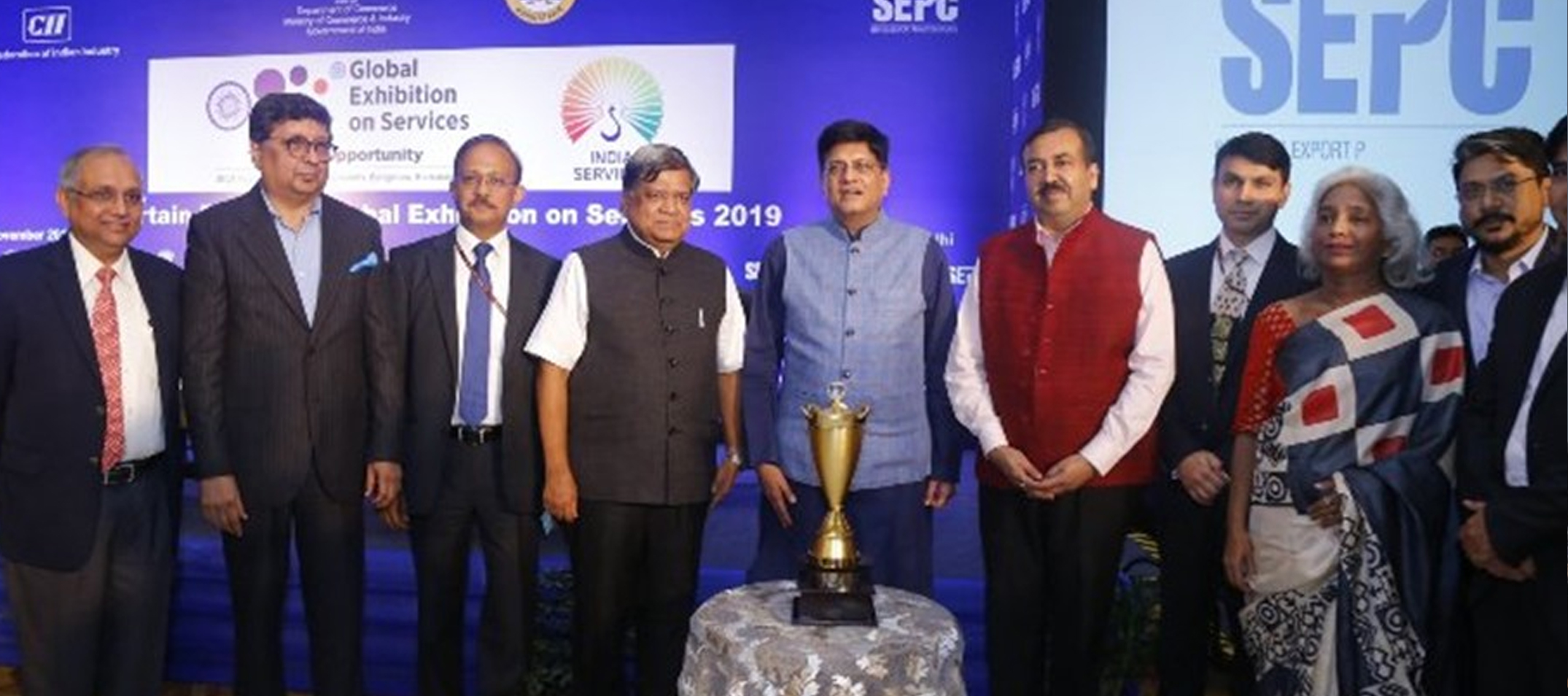
Union Minister of Commerce and Industry & Railways, Piyush Goyal, will launch the curtain raiser of 5th Global Exhibition on Services (GES) in New Delhi on 5th November 2019. The exhibition will be held in Bengaluru from 26th - 28th November 2019. The curtain raiser will be a prelude to the main GES and showcase the planned activities over the span of three days of Global Exhibition on Services 2019 and the expected outcomes of the exhibition. The event is expected to be attended by the heads of foreign diplomatic missions in India, line ministries, Indian State Governments, associations and private service industry players from around 100 countries. This initiative will enhance the competitiveness of India's service sectors through the implementation of focused and monitored Action Plans. These sectors include some of the largest and most critical sectors with the highest potential for global trade and investment, growth and employment. The objective is to give focused attention to 12 identified Champion Services Sectors for promoting their development and realizing their potential.
-
"eCAPA 2019 - Art from the Heart"
"eCAPA 2019 - Art from the Heart" is India’s first-ever Arts Exposition for Artists blessed with Down syndrome, Autism, Mental Retardation, Seizure Disorder and Dyslexia will be held in New Delhi on 2nd November 2019.
The "eCAPA 2019 - Art from the Heart" a nationwide platform cum social venture for the artists to show their art (both visual and performing).
The aim of the exposition is to create an exclusive platform for young adults with intellectual challenges to showcase their art talents.
The event will also connect the Divyang artists to mentors and eminent masters of different arts/crafts.
-
India to host 20th SCO’s CHG meeting in 2020
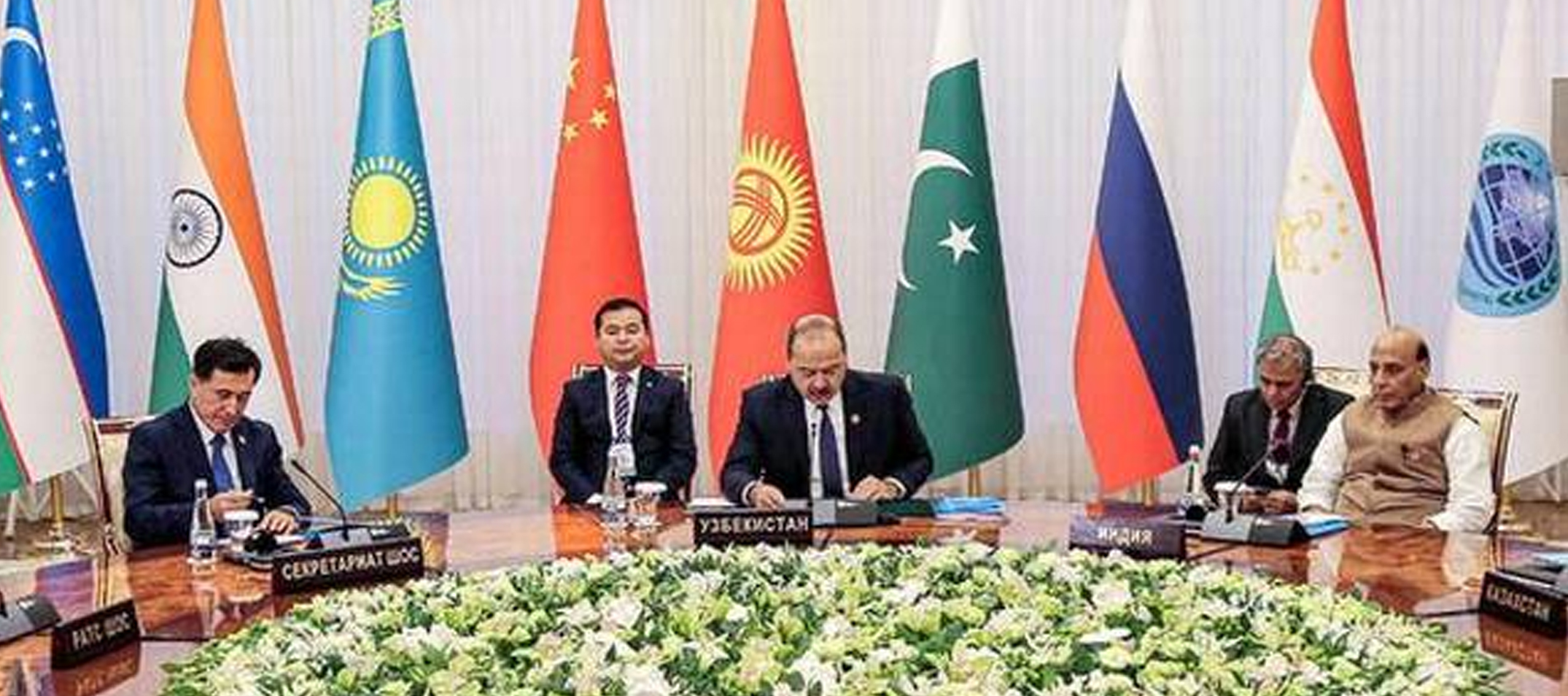
The Defence Minister Shri Rajnath Singh addressed the Council of Heads of Government of SCO at Tashkent in Uzbekistan. He represented as a Special Envoy of PM Modi at the conference. During the meet, it was decided that the next meeting of Council of Heads of Government in 2020 is to be conducted in India. The military exercise “CENTER 2019”, SCO joint military exercise that was held by Russia was congratulated at the summit. 20,000 units of military equipment, 128,000 soldiers and 600 aircraft participated in the event. The military chiefs from China, Kazakhstan, India, Kyrgyzstan, Uzbekistan, Pakistan and Tajikistan participated in the event.
India called upon the member countries to strengthen and implement existing international laws and mechanisms to combat terrorism.
India listed its recent initiatives to provide an enabling economic ecosystem for partner countries to invest and do business in India. It includes allowing 100% foreign investment in coal mining, easing sourcing norms for single brand retailers, approving 26% overseas investment in digital media, etc.
-
Madrid to host COP-25
The Spanish capital city of Madrid will be hosting the world’s annual climate conference, called COP-25 (Conference of the Parties) from 2 to 13 December 2019. This decision was taken following Chile’s stepping down as host for the COP-25 event due to the ongoing street protests in South American country.
The COP25 was earlier scheduled to take place in Santiago for two weeks from 3 December 2019.
The COP is the supreme decision-making body of United Nations Framework Convention on Climate Change (UNFCCC). All States that are Parties to the Convention are represented at COP which meets every year, unless the Parties decide otherwise. The COP meets in Bonn (the seat of UNFCCC secretariat), unless a Party offers to host its session. The first COP meeting was held on March 1995 in Berlin, Germany. At the COP the Parties review the implementation of the Convention and any other legal instruments that COP adopts and take decisions necessary for promoting effective implementation of the Convention, which includes institutional as well as administrative arrangements.
COP Presidency rotates among 5 recognized UN regions, namely, Asia, Central and Eastern Europe, Africa, Latin America and the Caribbean, and Western Europe and Others. COP Conference is the annual summit is a key event which allows representatives from about 200 countries to monitor as well as discuss current situation of world’s warming climate.
-
India-ASEAN Summit 2019
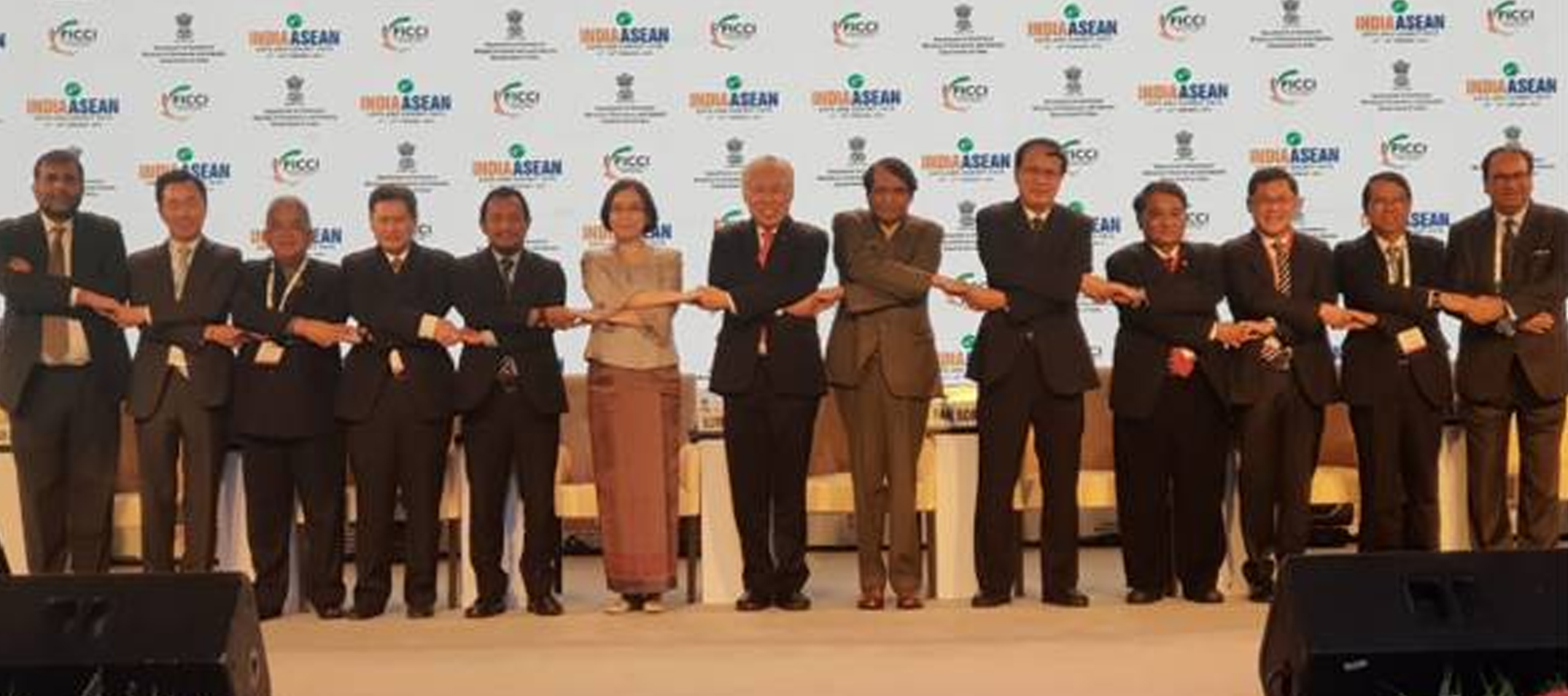
PM Modi attended the 16th India-ASEAN summit held in Bangkok. The current ASEAN summit is being held in Bangkok, Thailand and the next ASEAN summit is to be conducted in Vietnam in 2020.
India has allocated 1 billion USD as line of credit to improve physical and digital connectivity.
India highlighted that the India-ASEAN summit, 2018 and Singapore informal summit has brought India and ASEAN closer
ASEAN comprises of Singapore, Malaysia, Philippines, Indonesia, Thailand, Cambodia, Brunei, Myanmar, Lao PDR and Vietnam.
ASEAN is India’s fourth largest trading partner. India’s trade with ASEAN stands at 81.33 billion USD.
FDI inflows from ASEAN between 2000 and 2018 into the country has been 68.91 billion USD. The FDI outflows from India to the countries have been 38. 672 billion USD.
-
Shri Amit Shah inaugurates the Shanghai Cooperation Organization (SCO) Joint Exercise on Urban Earthquake Search & Rescue (SCOJtEx)-2019 in New Delhi
The Union Minister for Home Affairs, Shri Amit Shah inaugurated the Shanghai Cooperation Organization (SCO) Joint Exercise on Urban Earthquake Search & Rescue (SCOJtEx)-2019 in New Delhi. The Exercise is being organized by the National Disaster Response Force (NDRF) from November 4-7, 2019. The exercise is the outcome of the 9th Meeting of the Heads of Government Departments of SCO countries dealing with the prevention and elimination of emergency situations in Kyrgyzstan during 2017, in which India offered to organize the next Annual Disaster Management Exercise for the region.
Sports News
-
South Africa Wins Third Rugby World Cup Title Over England

South Africa beat England 32-12 to win the Rugby World Cup for the third time with winger Makazole Mapimpi scoring a drought-breaking try.
-
Official Emblem Unveiled For FIFA U-17 Women's World Cup India 2020
The official emblem for the FIFA U-17 Women's World Cup India 2020 was unveiled at a star-studded launch event at the iconic Gateway of India in Mumbai. The design combines exciting and colourful elements from both the natural world and Indian culture. The bright blue waves of the base reach up along the form of the trophy toward the paisley flourish crowning the design. The droplet frames a ball made from a marigold flower, a celebratory symbol of growth and development befitting a youth competition.
The color and style of the marigold are drawn from Bandhani textiles, an Indian tie-dye technique dating back thousands of years. The stem of the marigold is accented with vibrant symbols of unity and celebration derived from traditional Warli paintings, but in the bright hues found in Bandhani patterns. Together, the components are filled with the tournament's youthful energy and emphasize the potential for the upcoming event.
The FIFA U-17 Women's World Cup India 2020 will take place from 2 November until 21 November.
-
Asian Shooting Championships 2019: Manu Bhaker clinches gold in women’s 10m air pistol event
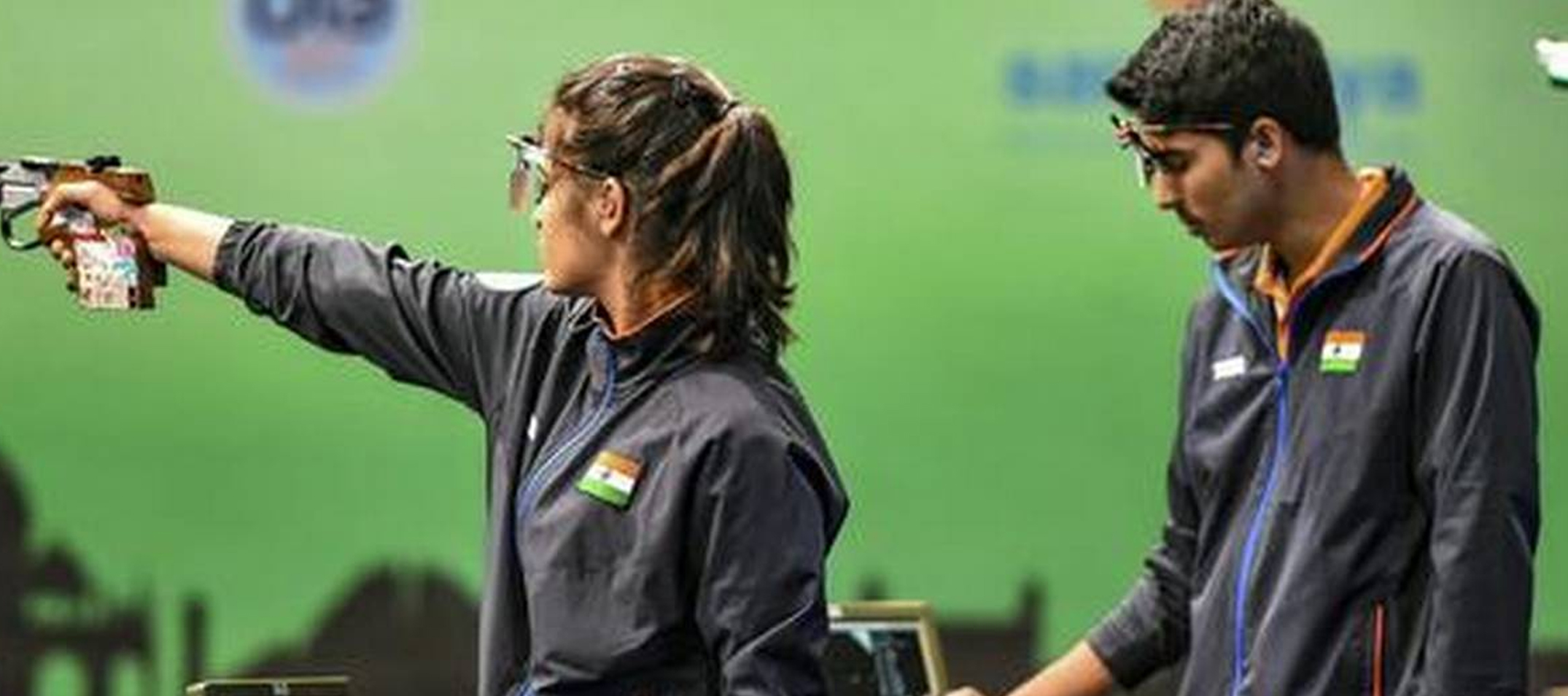
Deepak Kumar secured India's 10th Olympic quota in shooting while Manu Bhaker claimed the women's 10m air pistol gold medal in the 14th Asian Championship. The Jakarta Asian Games silver medallist shot 227.8 in the eight-man final to finish third on the podium and add to India's quotas for the 2020 Tokyo Olympics.
-
India to host 2023 FIH Men's World Cup, Spain, Netherlands to co-host 2022 Hockey Women's World Cup
The Executive Board of the International Hockey Federation announced that India would be hosting the Men's Hockey World Cup in 2023. Spain and the Netherlands have been confirmed as the co-hosts for the 2022 FIH Hockey Women's World Cup. The Men's Hockey World Cup would be played from January 13-29, 2023 while the Women's World Cup would be played from July 1-17, 2022. The venues for the tournaments will be announced by the host nations.
Rankings
-
Economist Intelligence Unit (EIU) released a report titled the 2019 Global Microscope on Financial Inclusion.
The Global Microscope for Financial Inclusion, now in its 12th year, is a benchmarking index that assesses the enabling environment for financial access in 55 countries. The EIU’s analysis takes four basic parameters into account: (1) Whether non-banks can issue e-money, (2) the presence of financial service agents, (3) proportionate customer due diligence and (4) effective financial consumer protection.
Of the 55 countries assessed, only 4 countries - Colombia, India, Jamaica and Uruguay - scored perfectly across all four parameters. India has the fifth most conducive environment among emerging countries for inclusive finance. Only Columbia, Peru, Uruguay and Mexico are ahead of India.
-
China is the world's worst abuser of internet freedom: Freedom on Net 2019 report
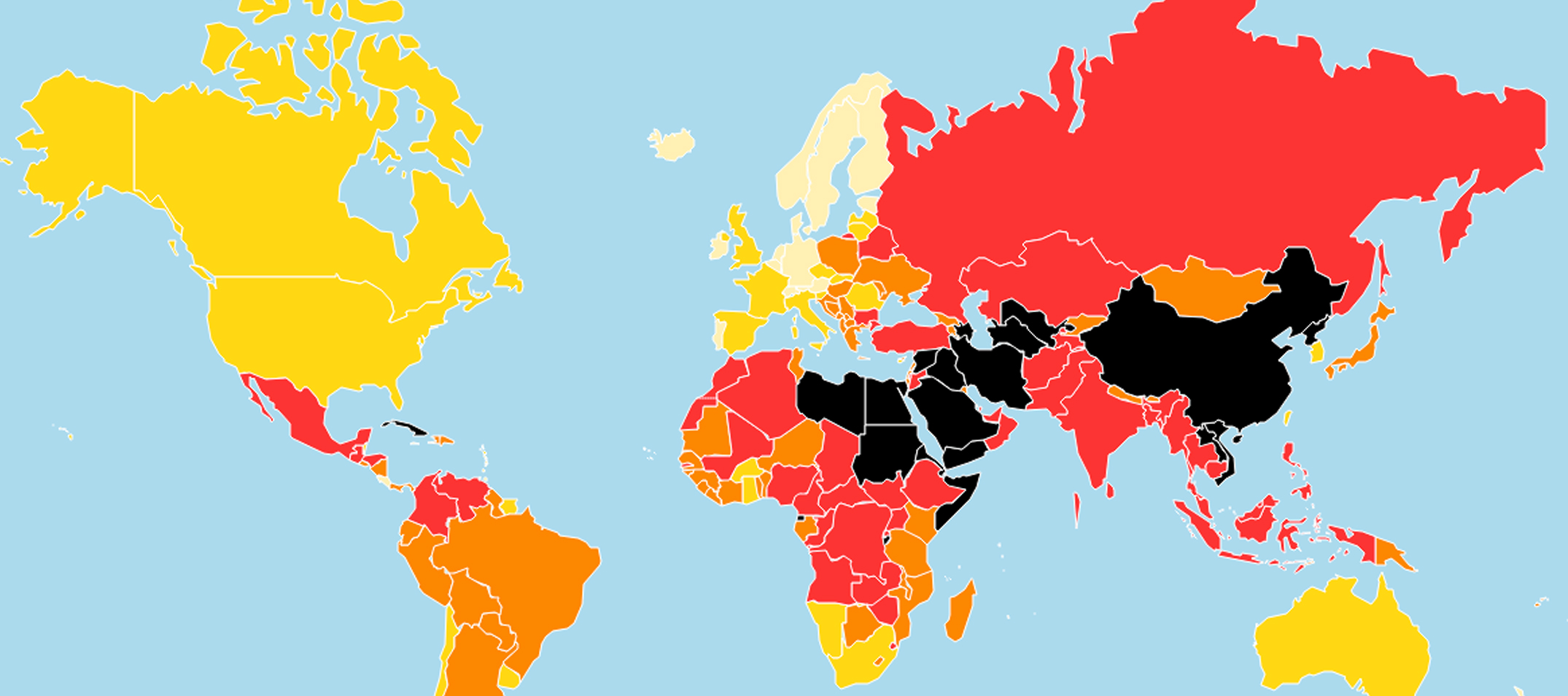
China was ranked as the world’s worst abuser of internet freedom for the fourth consecutive year and Pakistan was declared as 'not free’ in terms of internet freedom status for the ninth consecutive year in the Freedom on the Net (FoTN) report 2019. India was given an overall score of 55 in the Freedom on the Net 2019 report and was declared ‘partly free’ in its internet freedom status.
The Freedom on the Net report 2019 titled ‘The Crisis of Social Media’ was released by an international internet watchdog, the Freedom House. The report recorded an overall decline in global internet freedom status between July 2018 and May 2019. India was given an overall score of 55 in the report and the internet freedom status in the country was reported to be ‘partly free’.
The report assessed 65 countries and 33 among them showed an overall decline in internet freedom since June 2018. Only 16 countries showed improvements in their internet freedom status. Some of the countries that showed the biggest decline in internet freedom include Sudan, Kazakhstan, Brazil, Bangladesh and Zimbabwe. The country that recorded the biggest improvement in its internet freedom score in 2019 included Ethiopia.
Freedom on the Net is a comprehensive study of internet freedom in 65 nations across the globe. The report covers 87 percent of the world’s total internet users.
The annual report tracks declines and improvement in internet freedom. The 2019 edition is the ninth report in the series, which focused on internet freedom in the period between June 2018 and May 2019.

